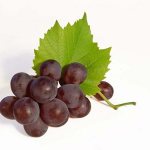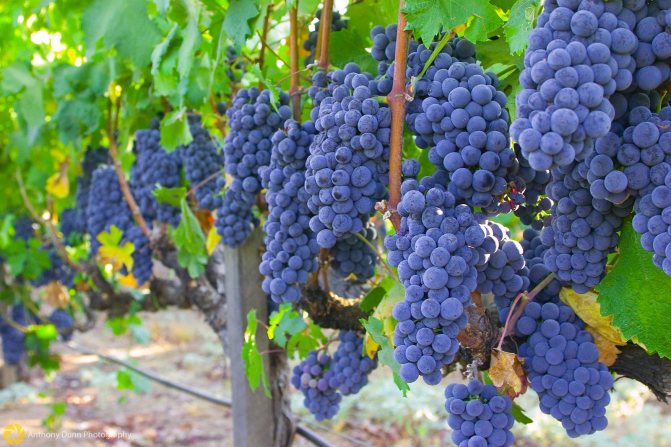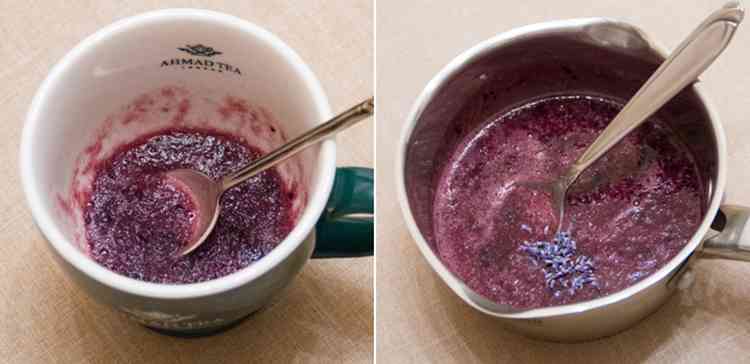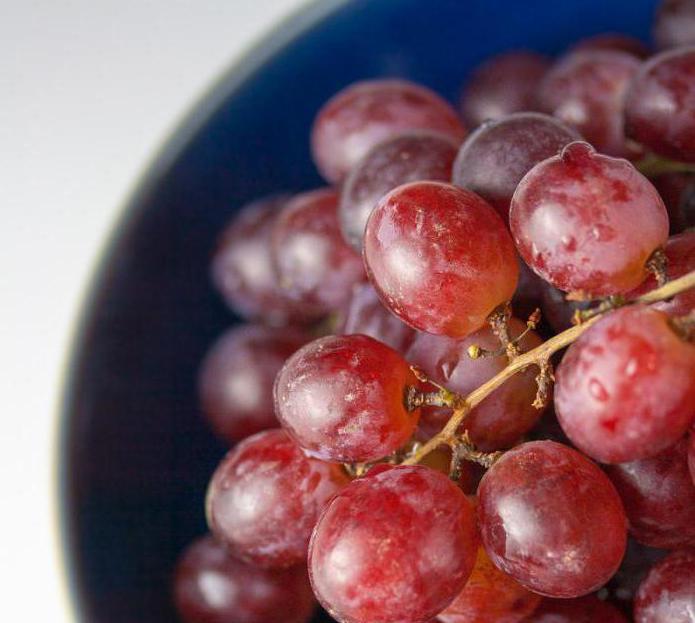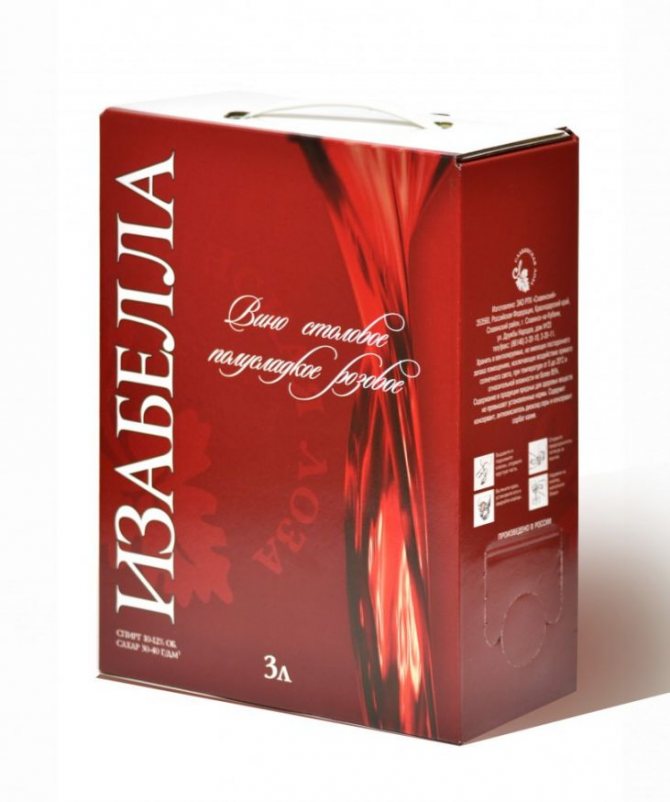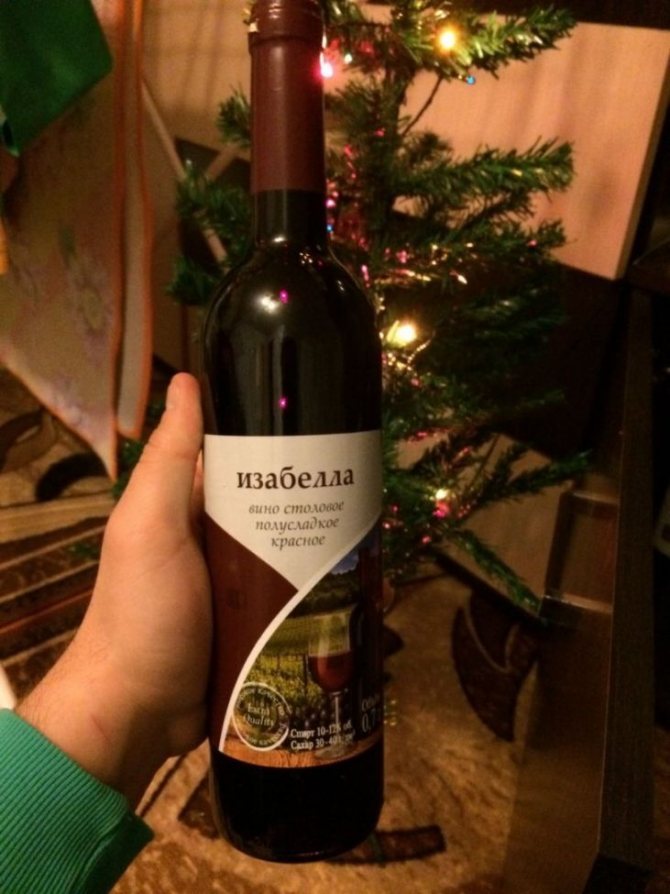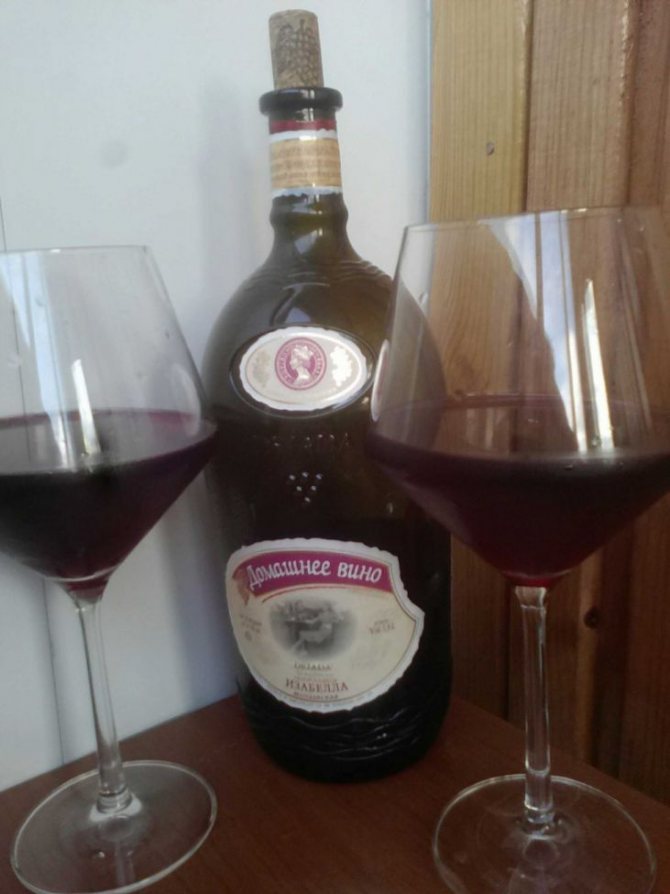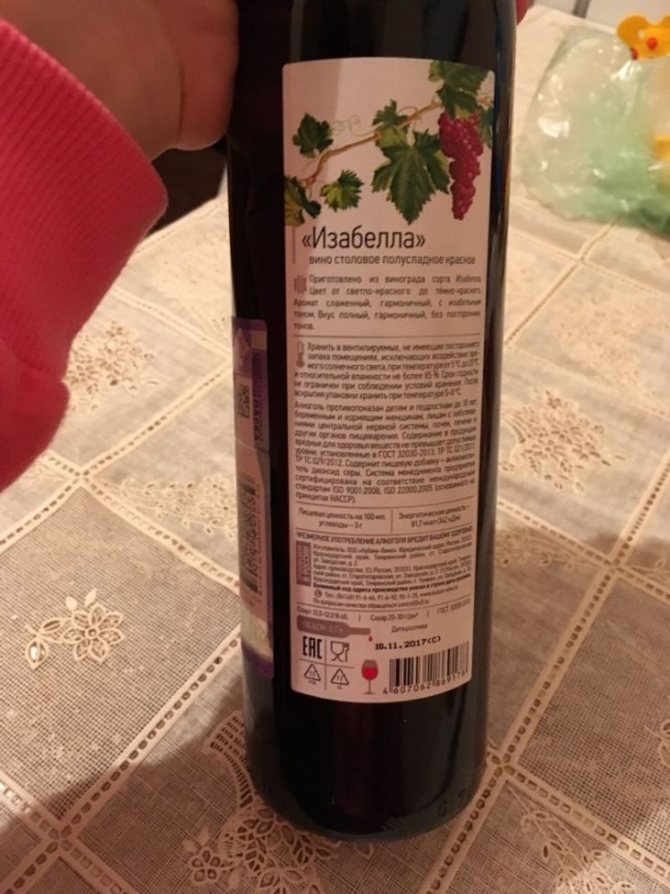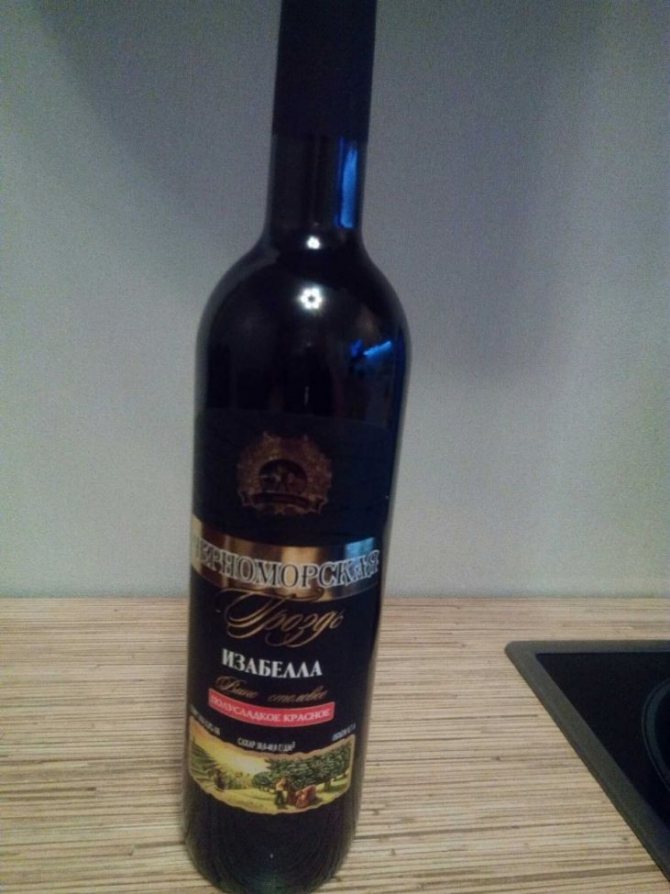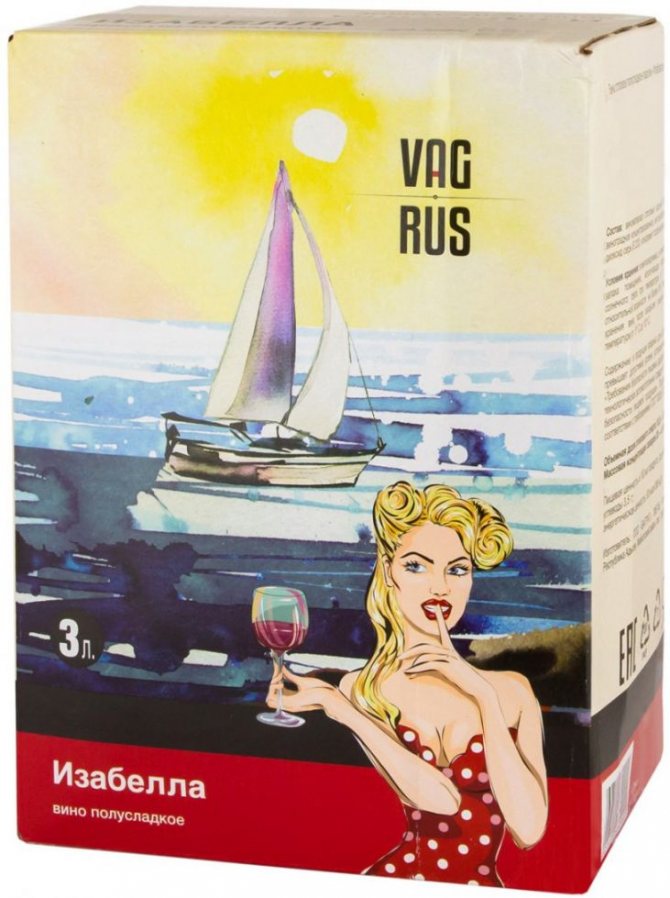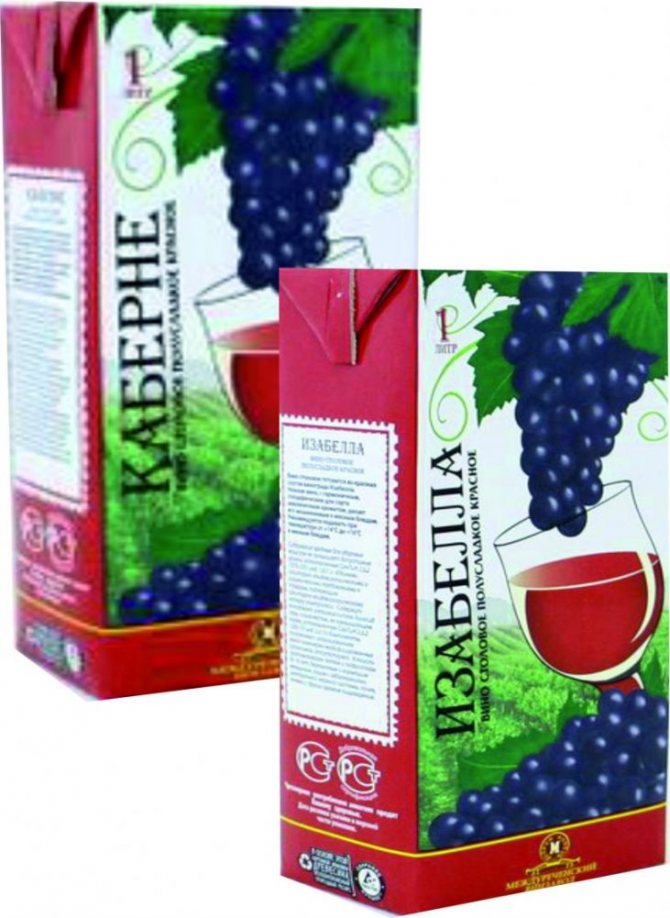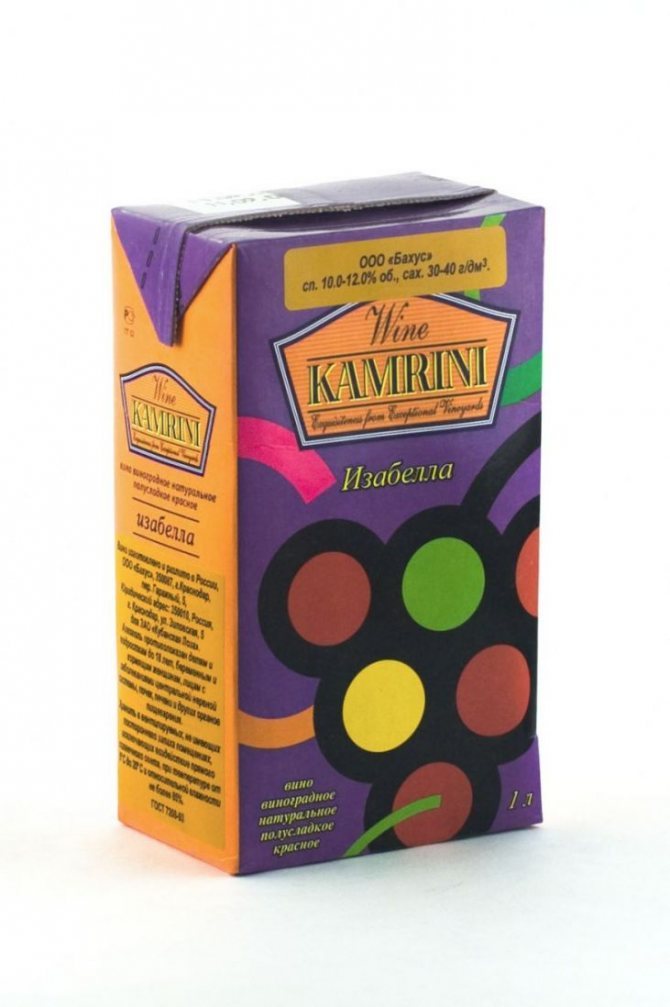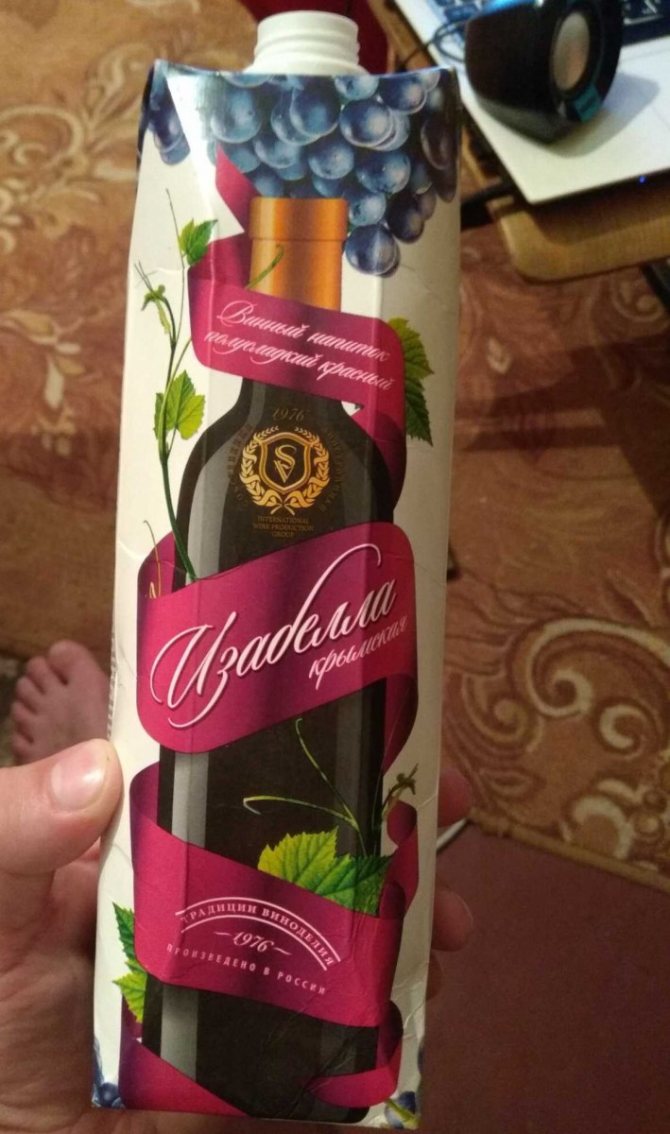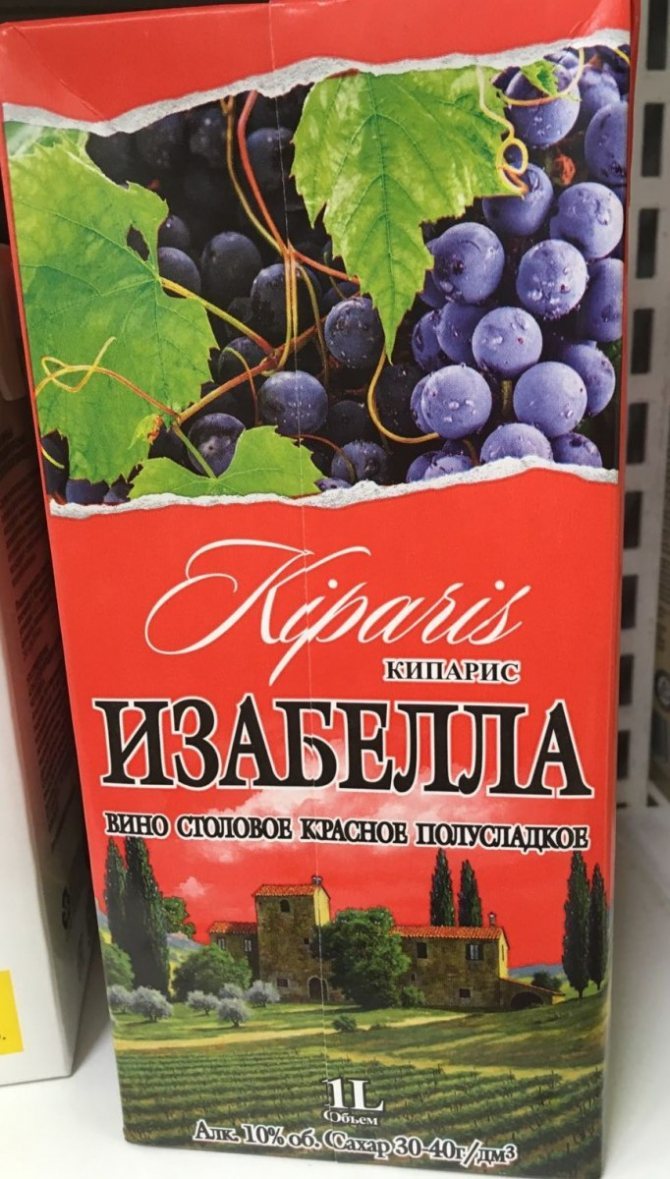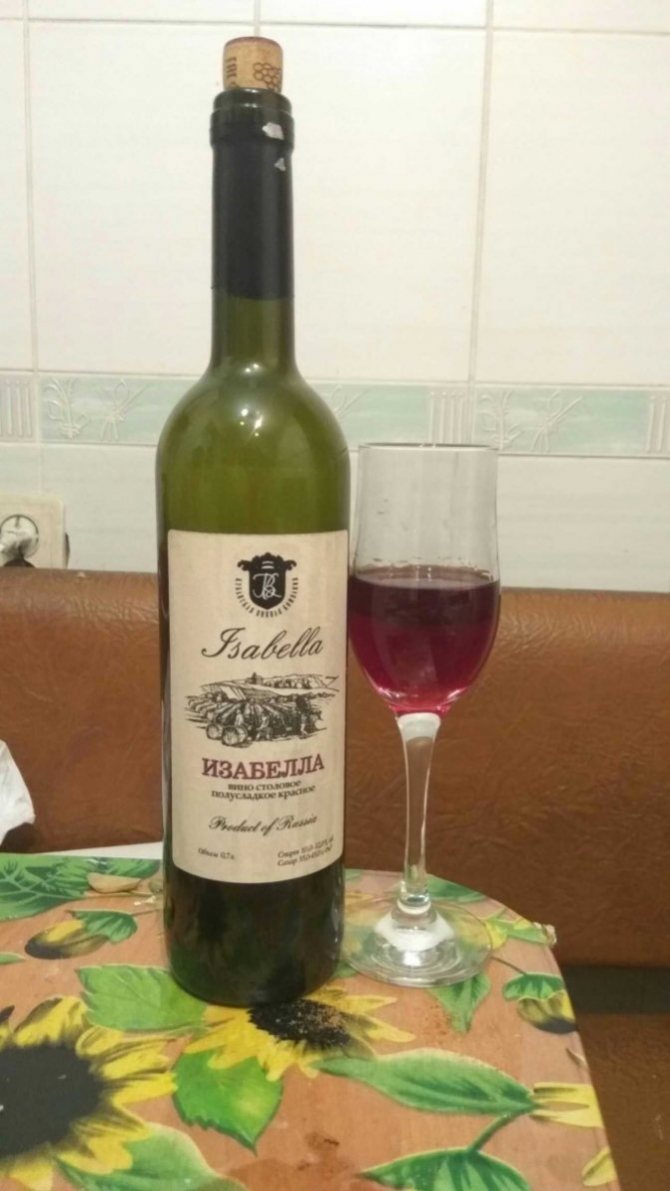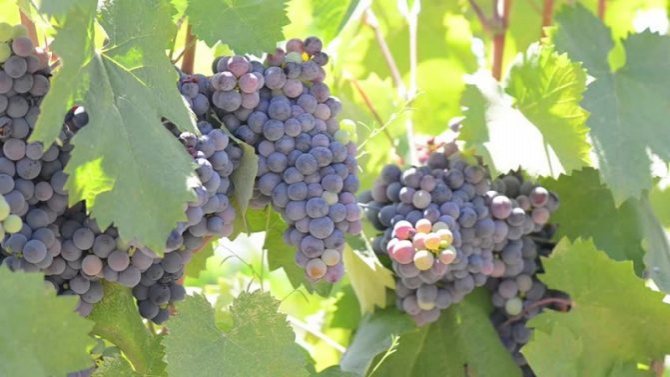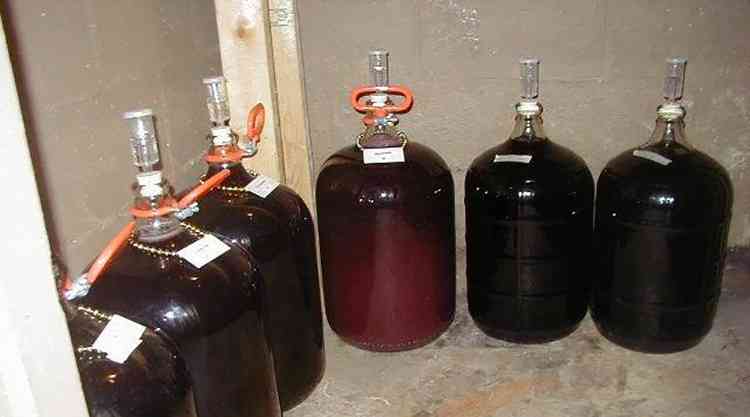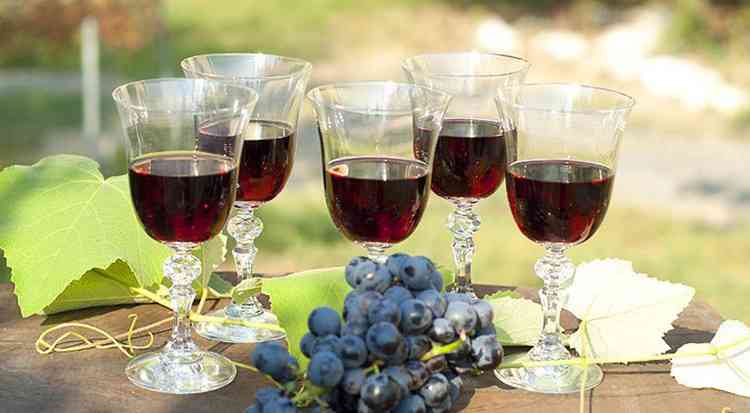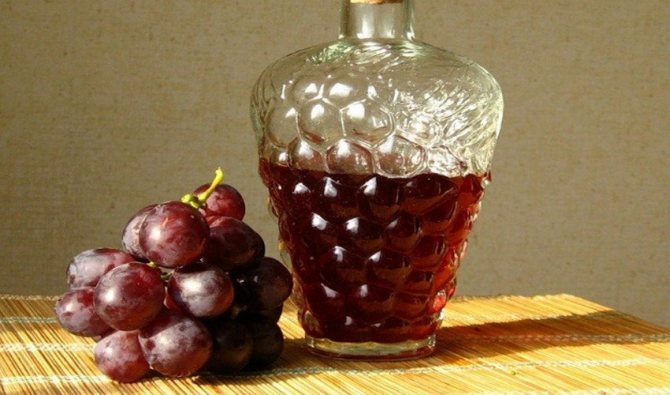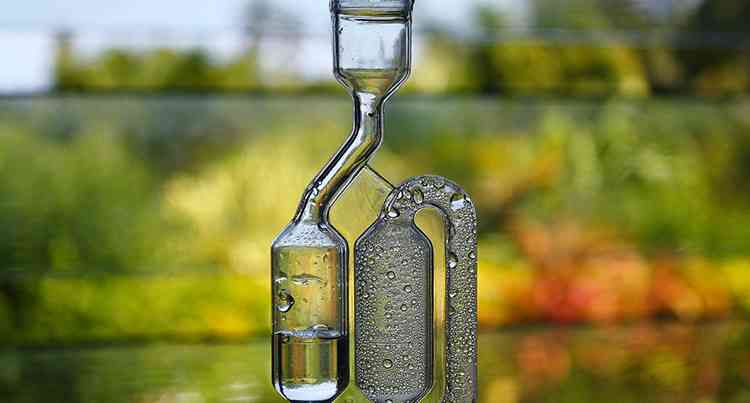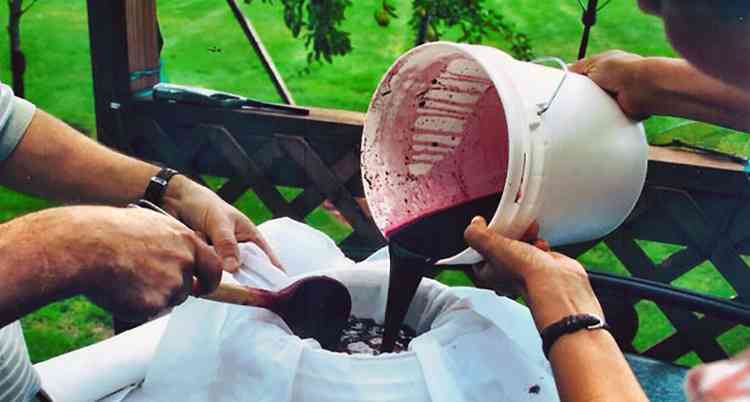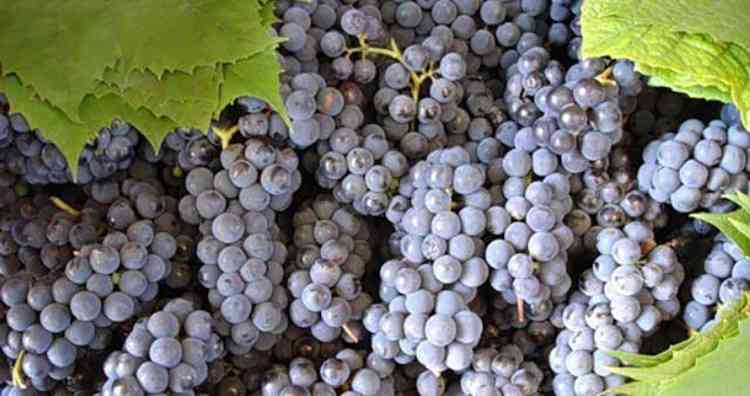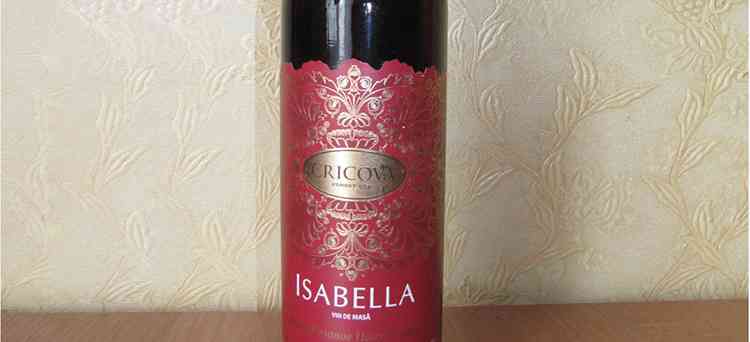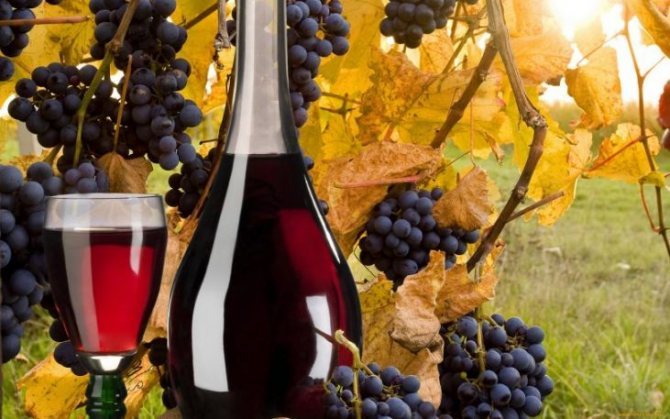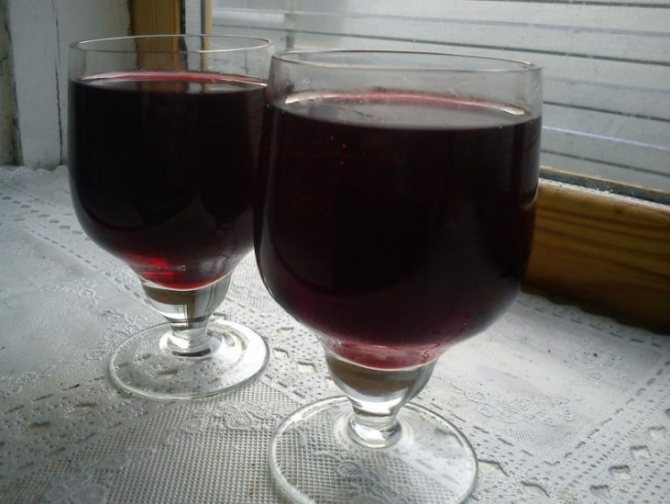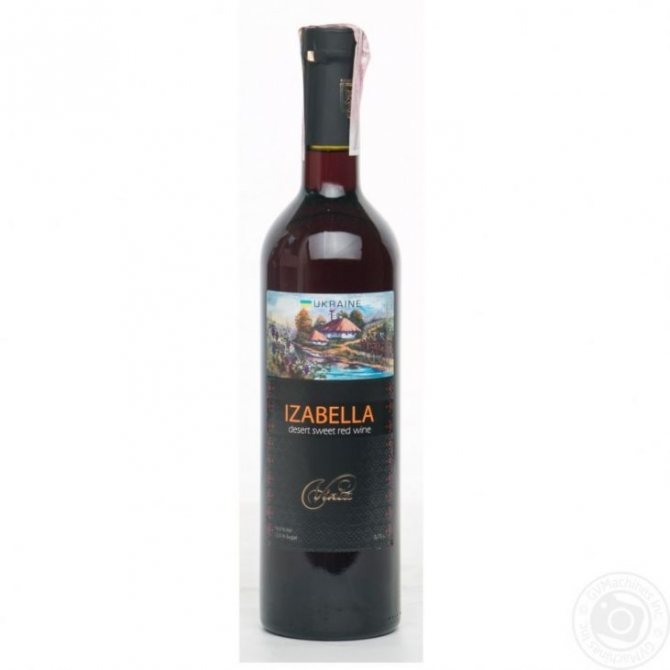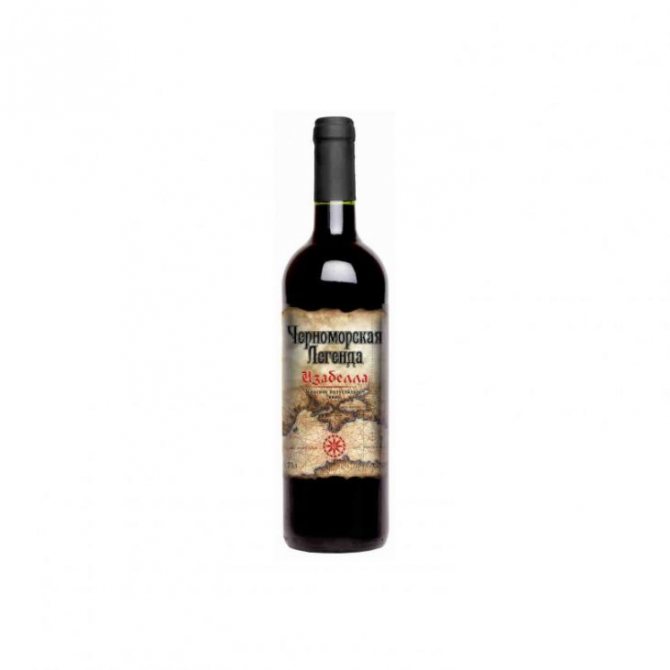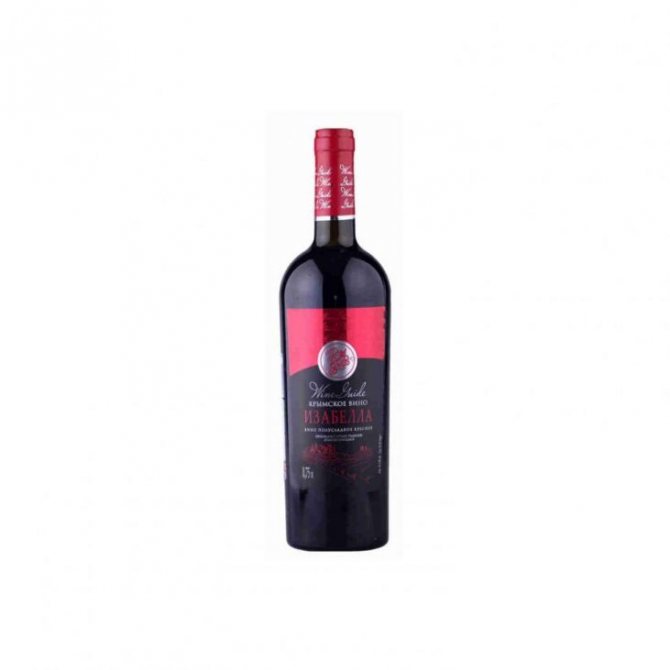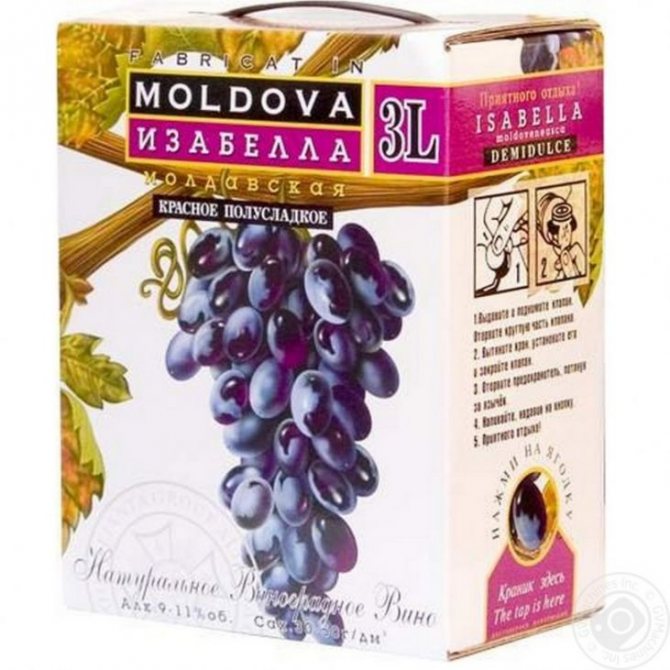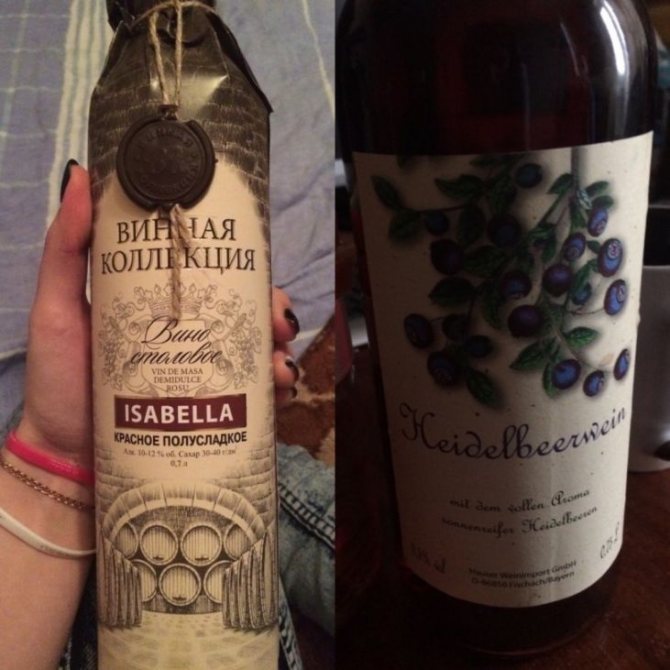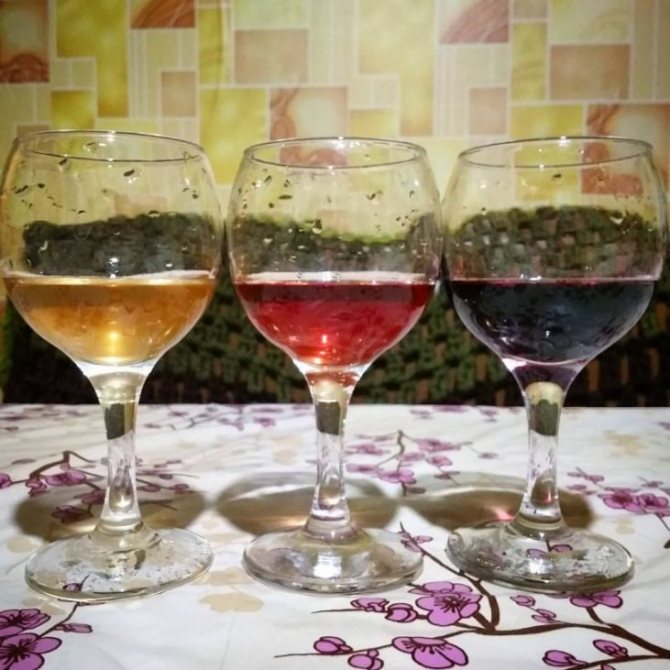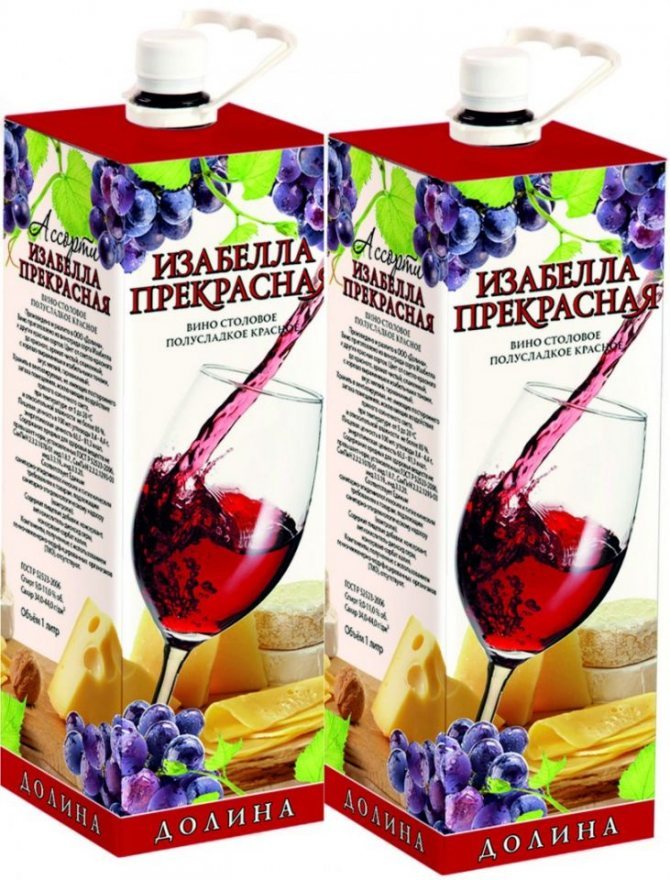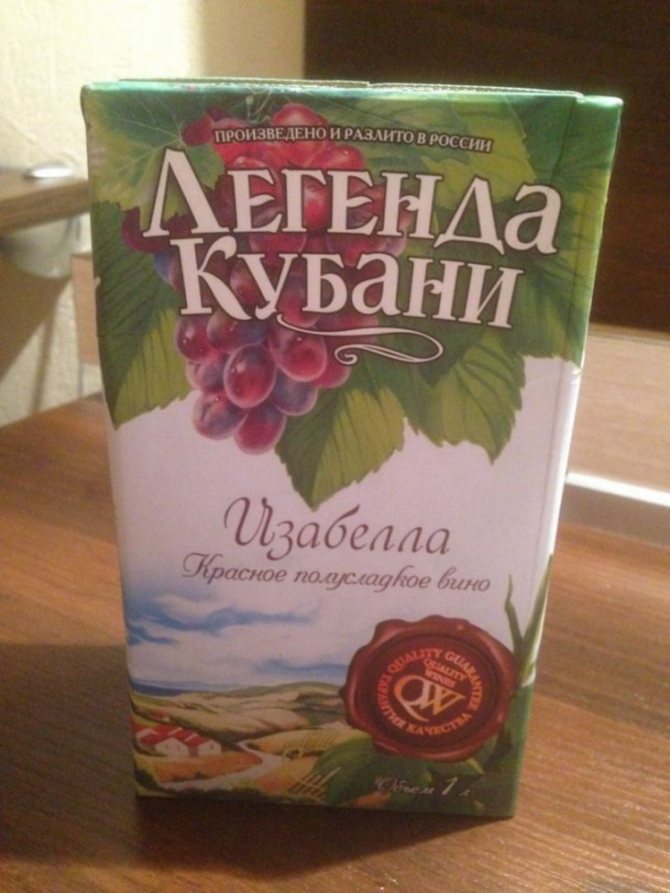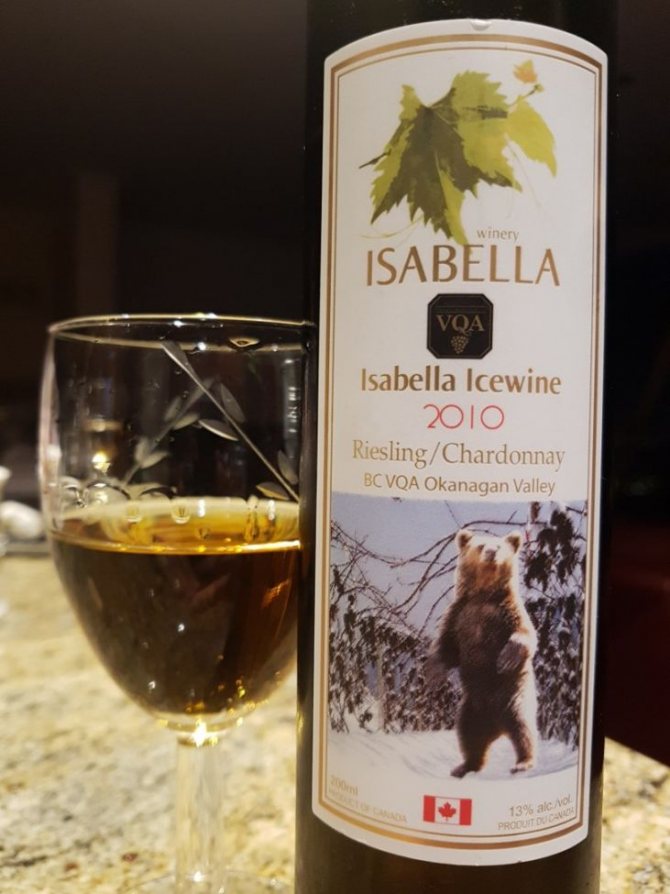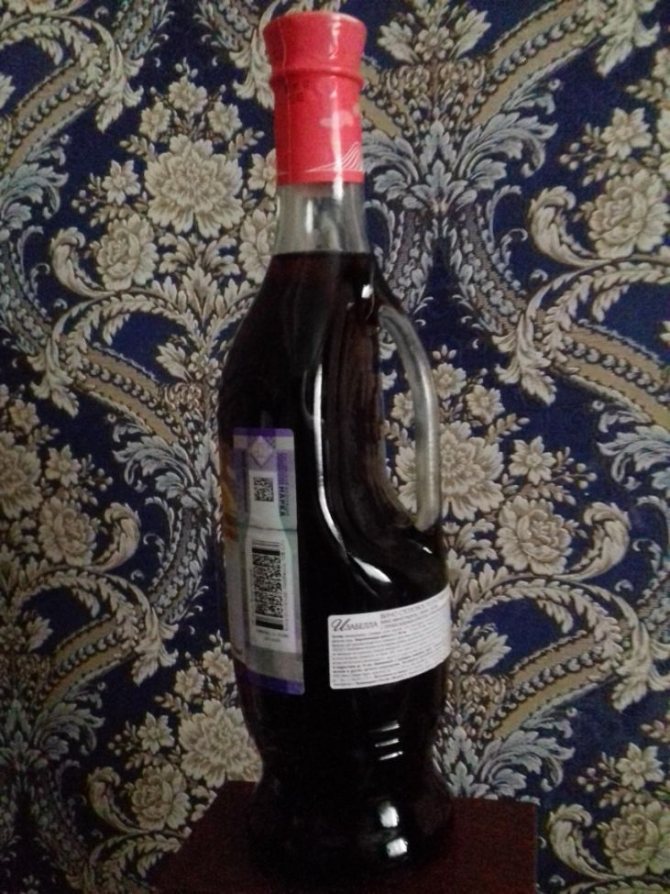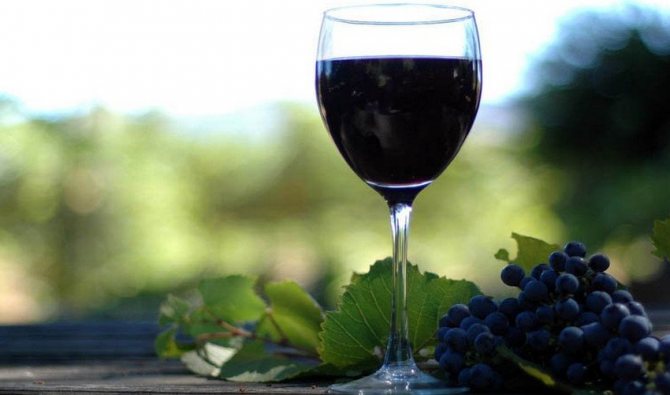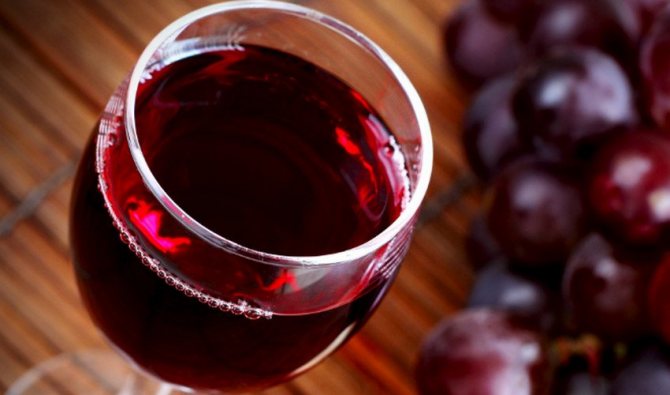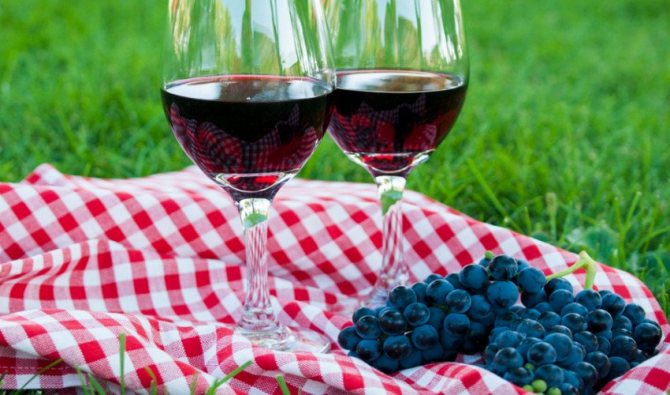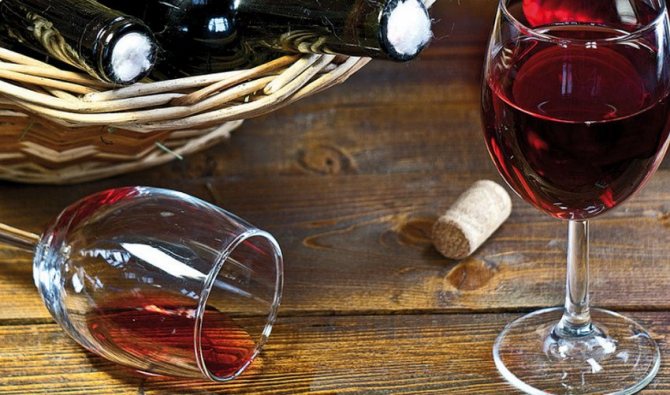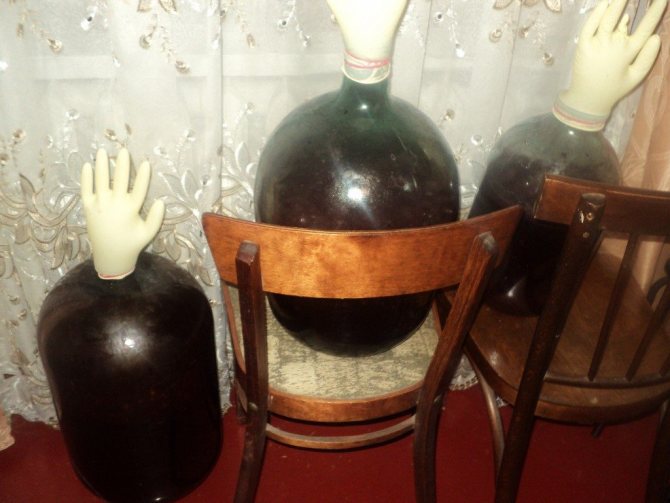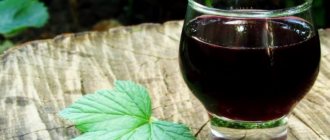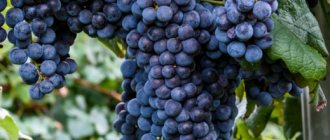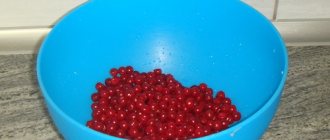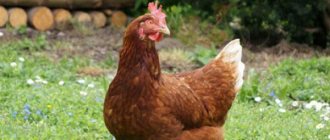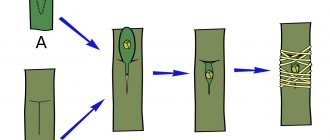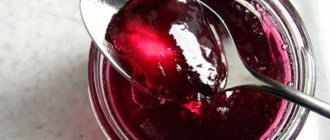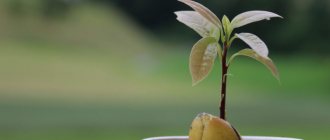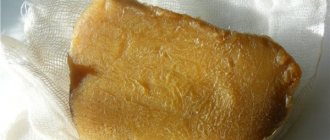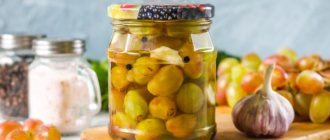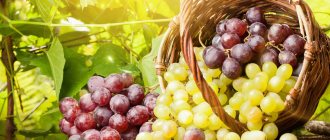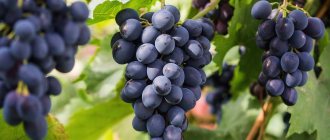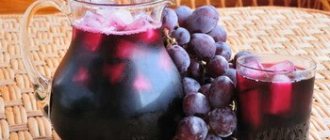The dark berries of Isabella grapes have a special strawberry (isabelle) flavor, the vine gives generous stable yields even on poor soils.
The fruits of Isabella have an impressive set of nutrients (including vitamins and minerals), which allow you to cleanse the body, strengthen immunity, restore tone, and increase efficiency.
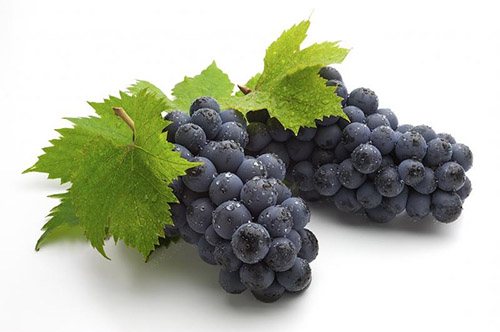
The peel and bones are rich in antioxidants and anthocyanins, which suppress the development of tumors and cancer cells, and have a beneficial effect on the cardiovascular system. Isabella berries and leaves are used in folk medicine (there is a video on the network).
Isabella is a table-technical variety; juices or wine can be made from its fruits. There are various recipes that allow you to make white, rose and red wine from this grape.
Isable grape varieties
This variety is grown in almost every area. The plant is unpretentious, frost-resistant, has a high yield. In addition, it is rarely affected by disease. The only drawback is that the berries have a slimy structure inside. But they make delicious compotes, jams, juices and wines.
Several varieties of this type have been developed. But they are devoid of slimy pulp and taste better than Isabella. This grape can be grown even in the north because the plant has a short budding to ripening period.
Such countries as Canada, Latvia and the USA are engaged in breeding. Popular Isabella grape varieties are:
- Lydia;
- Seneca;
- Isabella herself.
Their taste is superior to their new varieties:
- Alden;
- Zilga;
- Minsk pink;
- Simone;
- Alwood;
- Era, etc.
The listed varieties cannot be classified as large-berry and large-grained. A distinctive advantage of these berries is a stable harvest and good taste. In winter, plants do not need to be covered. Isable raisins Venus and Romulus are tastier and pitted. Almost all of these varieties contain a lot of sugar.
Benefits of Isabella for wine making
Homemade drink made from Isabella grapes is obtained very fragrant rich color... The taste is set off by a strawberry note.
Due to the different technological processes of making wine, you can change the color from dark burgundy to white. This is achieved by using pure juice of various isabelable hybrids (without skin and seeds) as a raw material base.
The incredible popularity of Isabella is explained by the following advantageous characteristics of the plant:
- high yield (60-75 kg / ha);
- strong immunity against typical grape diseases;
- frost resistance, which does not require the creation of a special shelter for the winter;
- quick recovery of frozen vines;
- good survival rate of seedlings, intensive release of new shoots;
- indicators sugar content and acidity are in the required ratio;
- a lot of juice in fruits;
- bright flavor notes can be complemented by the aromas of other products without losing varietal expressiveness;
- simple rules of agricultural technology.
Gardeners note the unpretentiousness of the plant, it develops well literally on any soil with low and high humidity.
When and how to pick grapes
The technical ripeness of the Isabella variety falls on last decade of October months. In order for the berry to accumulate a sufficient amount of sugar content, you need to wait another week, only then you can harvest and the grapes are ready for processing into wine.
It is important to have time to harvest the crop before frost... When choosing the day for cutting the bunches, weather conditions are also taken into account, there should be no precipitation.
How to make homemade dry or semi-sweet wine with your own hands
Ingredients
To prepare wine, many ingredients are not required, it is worth cooking only grapes and sugar... Also, you will need containers for work: bottles (wine), a capacious barrel (preferably made of oak blanks), a sieve.
Gases are released during fermentation, and a special gas is required to release them. odor trap and thin hose... Often these devices are replaced in everyday life with rubber gloves.
Proper preparation for processing
For the preparation of wines are selected only healthy bunches with quality berries... Quality does not mean parameters and beauty, but integrity and the absence of signs of damage or disease.
- cessation of gas evolution from a hose (or a deflated rubber glove);
- precipitation at the bottom of the dishes;
- clarification of the wine and the appearance of transparency.
Its features
This grape is unpretentious to natural conditions, does not require special care. Thanks to this, he is popular with many fans. The variety belongs to technical table grapes, berries are well suited for processing into juice.
- France, Spain and Italy are the standards of the world production of high quality wine, which means the content of methyl alcohol is not more than 40 mg / liter;
- the international standard for the maximum permissibility of methanol is considered at the level of 300 mg / l;
- Isabella red wine has a methyl alcohol content in the range of 120 mg / liter.
Methanol is considered a poison, it has a negative effect on the activity of the kidneys, liver and optic nerve. In order to avoid deterioration of the health of its citizens, in a number of developed countries, commercial winemaking from this grape variety is prohibited.
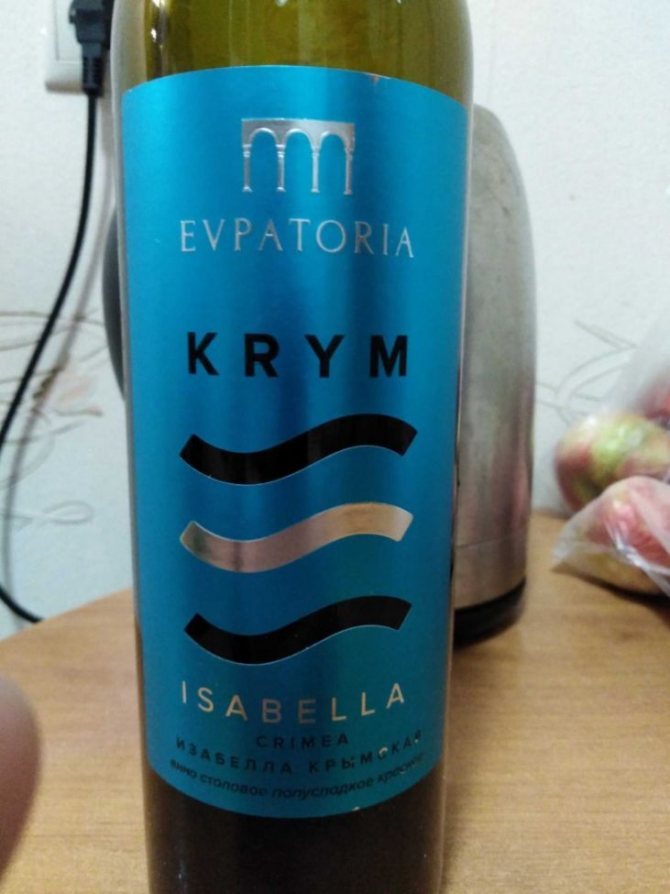

How to make Isabella wine at home?
Isabella wine gets its name from the grape variety from which it is made. Many winemakers in our country do not recommend using this variety due to the difficulties in processing the fruit.
But if you prepare everything correctly and follow the production technology, you will get a good drink with a delicate taste and bright aroma.
This type of grape has gained wide popularity in our country, because it is frost-resistant and gives a good harvest in a climate with high humidity.
This grape belongs to the table and technical plant varieties. It is rarely eaten, but juices and wines are made from the fruits.
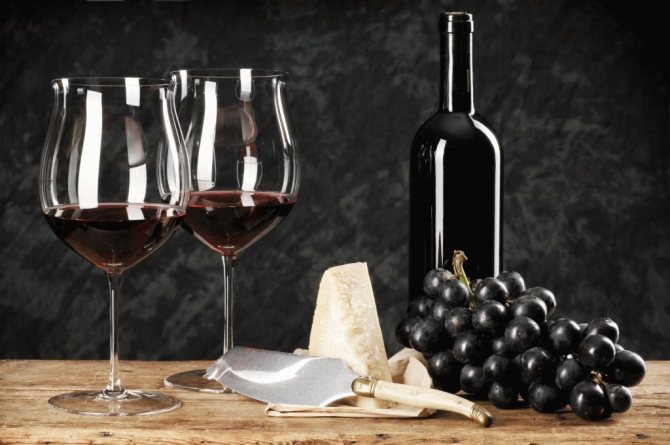

Harvesting grapes and preparing containers
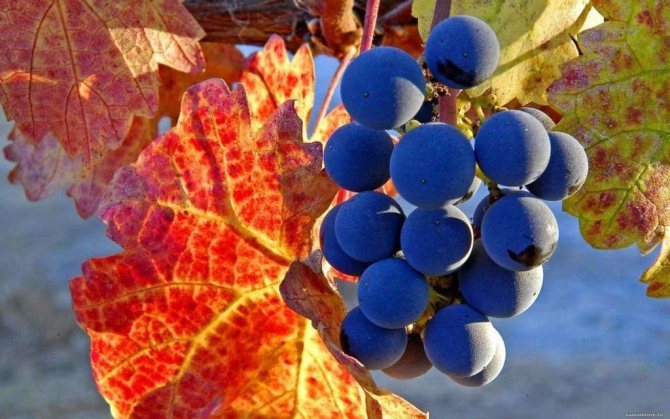

In the middle lane, the grapes reach ripeness by the end of October. To accumulate more sugar in the berries, they are not cut for another week. The collection work must be completed before the onset of frost. A sunny day is chosen so that all beneficial microorganisms are preserved on the surface of the berries.
Ripeness is determined not only by the appearance of the bunches, but also by the aroma, which is felt from afar. Only ripe berries are selected, discarding damaged and diseased ones. Cracked fruits lose a lot of juice, so they are not suitable for making Isabella wine.Berries cannot be washed, otherwise all natural yeast that is involved in the fermentation of the drink will be destroyed.
The main condition for storing wine is a dark, cool room. The drink should not come into contact with metal and air. Even in the intermediate stages of preparation, the wort should not be in copper, iron or zinc containers. Aluminum containers are suitable only for pouring - you cannot store the tincture in it.
The best options are glass bottles, oak barrels and enameled dishes. Glass is best because it is easy to clean and just rinse before use. Oak barrels for winemaking should be free of foreign odors and mold. Young wine is bottled. The smaller their volume, the better the drink will ripen.
White wine recipe
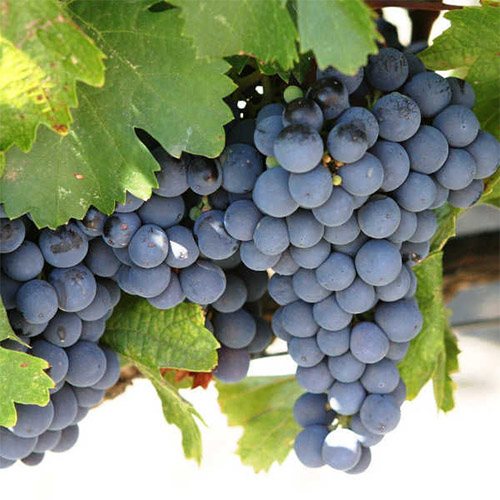

Isabella wine recipes abound, including old ones. You can watch a video where the cooking process is demonstrated visually.
We offer a simple recipe for dry (table) wine from the berries of this variety. It is worth noting: thick red wine is often made from Isabella (fermentation takes place on the pulp). It takes more effort to make a good red wine. When fermented on juice (over white), a good result is easier to obtain.
Ingredients:
- grapes - 10 kg;
- sugar - 100-200 g / l of grape juice;
- * clean water - 20–100 ml / l of grape juice.
* Water is used if the grapes grew in poor conditions, the berries are not of very good quality (little sugar, a lot of acid). To reduce acidity, the juice must be diluted with clean water. It is not necessary to dilute high-quality wine material, as water impairs the taste and aroma of the wine.
Grape preparation
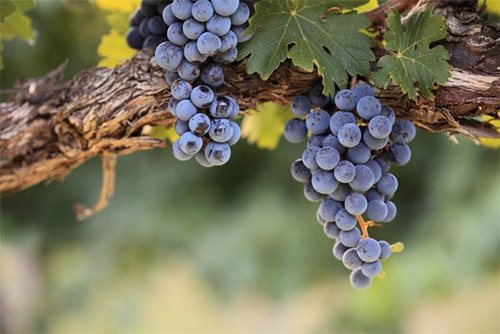

Collecting grapes for making wine is recommended in the morning, when the dew subsides. Berries of any size are suitable for homemade wine. It is necessary to carefully sort the grapes, remove spoiled, rotten, green grapes. It is impossible to wash grapes intended for making wine. Yeast fungi (wild yeast) live on the surface of the berries, which activate the fermentation process.
Pulp preparation
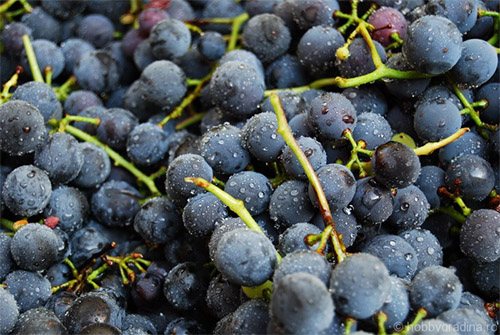

Isabella is a late variety, the ridges are already dry by the time of harvest, whole bunches are rarely used for wine. These recipes are popular with tart wine lovers.
Making wine from grapes. The berries are separated from the twigs into an enamel container (you can use stainless steel dishes or high-quality food grade plastic), crushed with your hands or in another way. To get the maximum amount of juice, you need to crush all the berries.
It is very important not to damage the grape seeds when you crush the berries. The seeds of this variety contain a large amount of tannins (tannins), which give the wine excessive bitterness.
Wort preparation
The grape mixture (pulp) is allowed to brew for 3-4 hours. Then the preparation of the wort begins: the mass is filtered through a colander into a prepared clean container. You can squeeze the juice through cheesecloth. The cake is no longer needed.
The juice (wort) can be sour. Winemakers consider 4–6 g of acid per liter of wort to be the norm. Often even ripe Isabella grapes show acidity up to 12-15 g / l.
Unfortunately, it is impossible to accurately determine this indicator at home. This requires an expensive special device - a pH meter. You have to rely on taste.
If the acid is so palpable that it reduces the cheekbones, tingles the tongue, then the recipe should be supplemented with the addition of water. Water should be added very sparingly, since the acidity is lowered by the addition of sugar.
Fermentation
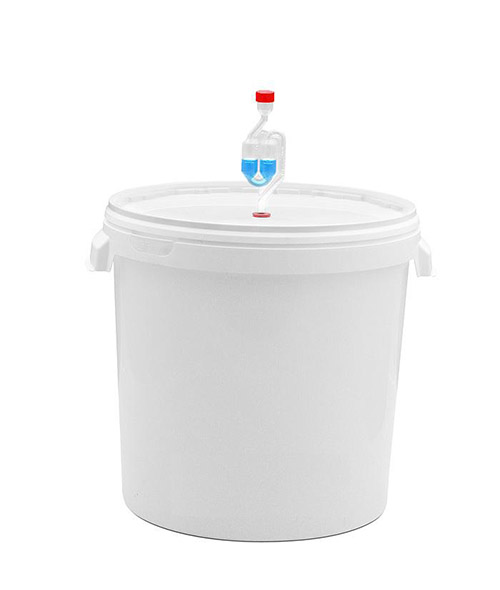

For fermentation of wine, glass bottles (mercurials) or jars are used. At home, as a rule, containers of 5, 10 and 20 liters are used. Bottles are thoroughly washed with soda, rinsed, sterilized. The wort is curled into a dry container, filling it by 2/3 so that there is enough space for fermentation.Add half of the sugar required for a given amount of juice.
A water seal is installed on the neck of the fermentation bottle. You can make it yourself (you can see how to make various designs on the video on the Internet) or buy a ready-made one. A very good alternative is a medical glove with a hole in one of the fingers (it is made with an ordinary needle).
It is important to ensure the tightness of the shutter so that excess wine gas escapes only along the route provided by the design, and air does not enter the bottle, so that sour vinegar does not turn out instead of aromatic wine. The shutter can be sealed with adhesive tape, plasticine, and other improvised means.
The container with the wort should be placed in a dark place (or covered with a thick cloth). The room temperature should be between 16-22 ° C. If this is not possible, fermentation will take place in warmer conditions (24–30 ° C), then it is worth filling only half of the fermentation tank with wort, since at high temperatures fermentation is more vigorous.
Sugar addition
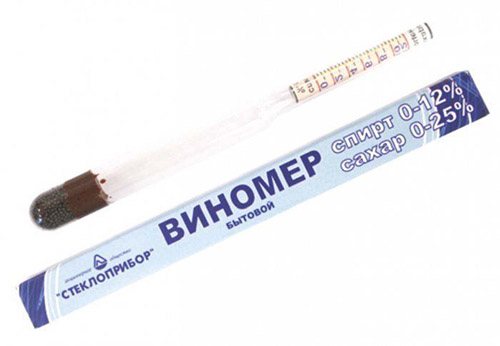

At the first stage of fermentation, only half of the sugar of the norm calculated for a given volume of juice was added to the wort. It is advisable to divide the remaining part by 2 times. Add the first batch of sugar on the fourth or fifth day (half of the remainder).
Remove the shutter, pour half a liter of wort into a clean container with a hose, dissolve sugar in it, pour the liquid into the fermentation tank, put a water seal.
Repeat this procedure after four to five days.
When re-installing the odor trap, be sure to check its tightness! If you use a rubber glove, it is more practical to use a new one every time.
Isabella grape wine can ferment from 35 to 70 days. You need to monitor the process so as not to miss its completion. This is important, as wine that has stood on the lees significantly loses its taste.
The main signs of the end of fermentation: no gas is released (if you have a glove, it will deflate), the liquid in the fermentation bottle will become transparent and lighter, there will be a sediment layer at the bottom of the bottle.
If fermentation lasts more than 45-50 days, then experienced winemakers recommend pouring the wine into another bottle (drain from the sediment) using a rubber hose or a dropper tube. This must be done carefully so as not to disturb the sediment.
The young wine is carefully drained from the lees. It can be filtered through multilayer gauze or special filters.
Adjusting the taste of young wine and aging
The drained wine must be tasted in order to determine the next steps. If the taste is excellent, then the wine can be bottled. Young wine is bottled, hermetically sealed and left for further ripening (aging).
If the taste characteristics do not suit you, then at this stage you can adjust them.
If the intoxicating drink turns out to be too sour, the situation can be corrected by adding sugar (to taste). After adding the required amount of sugar, the sweetened wine should be placed under a water seal for about a week. Then pour into a clean container and seal tightly. Pour the drink in a container to the top so that contact with air is minimal.
You can fix the wine with vodka or alcohol (add from 2 to 15 percent alcohol to the volume of the finished wine). Fortified wine has its admirers, but besides this, such wine is better and has a longer shelf life.
Containers with wine should be placed in a refrigerator or basement, where the appropriate temperature regime should be (5-15 ° C). Extract for Isabella wine at home should be at least 3 months.
The state of the wine must be constantly monitored. If a sediment appears at the bottom, then the wine must be quickly poured (drained from the sediment) into a clean container, hermetically sealed.The procedure is repeated until a precipitate forms. During the aging period, a unique bouquet, aroma and color of the wine is formed.
Storage
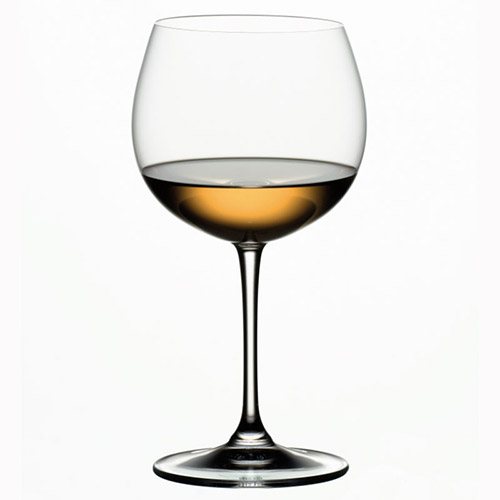

After 3–6 months, Isabella wine will be ready to drink. It is poured into wine bottles, hermetically sealed. Store horizontally on a refrigerator shelf or on racks in the basement.
If the technology of making wine is observed, the exposure was six months, then the strength of the drink will be 9-12% (without fixing). The shelf life of such wine is 5 years (subject to the storage regime).
The color of white wine from Isabella is light golden, the flesh of this variety is almost uncolored, the coloring matter is in the skin of the grapes.
Curious facts
- Grapes contain 80% water, so the product is good for diets.
- It acts as a laxative, which is another plus for the diet.
- Grape skins are high in beta-carotene and lycopene. These substances contribute to tissue repair.
- Grape juice is a natural energy drink.
- The juice has an antipyretic effect.
- Grape juice well cleanses the skin of the face, destroys acne.
- Juice from unripe berries treats oral infections.
- Black and white raisins contain anthocyanin, which stops the growth of cancer cells.
- Grape juice removes toxins, is a good diuretic. As such, it is used to reduce edema.
- Grapes improve the flow of bile.
Origin
Isabella wine grape is one of the oldest hybrids. It was obtained by crossing the American Vitis Labrusca and the European Vitis Vinifera. After the opening of the New World, seedlings of the new Labrusca grapes began to be imported to Europe. Together with them, such diseases as phylloxera and powdery mildew (white powdery mildew) got to the Old World. At the end of the 18th century, whole vineyards with unique varieties perished in many countries due to pests and fungi.
European winemakers had no choice but to try to cross the American and local vines. The hybrid was first bred in 1816. Then his pink version of Lydia was created. The new varieties proved to be resistant to phylloxera and oidium, as well as to a number of other fungal diseases. They turned out to be extremely hardy.
A little about adding sugar and water
If the amount of sugar in the drink is increased by 2%, its strength will increase by 1% vol. Isabella wine, prepared without added sugar, has a strength of 9-10% vol. The maximum possible is 14% vol.
Sugar is added on the 2nd day of active fermentation. For this, 1 liter of drink is poured from the container and 50 g of sugar are added. After mixing, you need to try: if the taste is sour, you can add another 20 g. Repeat the process - every week. If the sugar content of the drink has returned to normal, you no longer need to add sugar.
To make wine from Isabella correctly, you need to take clean and soft, odorless water. With the addition of water, the acidity of the drink decreases. Before use, the water must be boiled and used warm, then the fermentation will be more intense.
Juices
The grape juice is delicious and it smells good. From the Isabella variety, the juice is obtained with a rich burgundy-ruby color. You can use a juicer, if there is no one on the farm, but you want to make grape juice, we advise you to use the following recipe.
We need:
- Isabella grapes - 10 kilograms.
- Boiled water - 8-10 liters.
- Sugar - sand - from 3 to 5 kilograms.
Cooking juice:
- Rinse the grapes under running water.
- Fill the enamel container tightly with it, in which we will cook the juice.
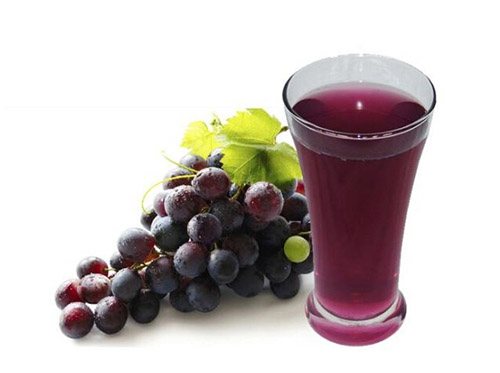

- Fill with water so that its level is almost on par with the grapes.
- Bring to a boil over low heat so that the color does not change.
- When it boils, make sure that all the berries burst and give all the juice into the liquid.
- Stir slowly until the juice is completely separated.
- Then carefully strain through a sieve and gauze filter.
- Re-put the juice on low heat.
- Add sugar, the taste should be concentrated.
- After boiling, pour into jars and preserve.
- The banks should cool down for several days, wrapped in warmth.
According to this recipe, the juice from grapes is concentrated, for drinking we recommend diluting with water in a ratio of one to one or one third. It is very aromatic, tasty, extremely healthy.
Other fruits, such as apples, can also be added to the juice. For such blanks, you need to take already squeezed apple or pear juice, add to grape juice to taste, bring to a boil over low heat and seal with metal lids.
Its cost
The price of Isabella wine will depend on many factors. These include:
- the quality of the crop;
- compliance with the technological process;
- aging of the finished wine and its variety;
- design and marketing ploy.
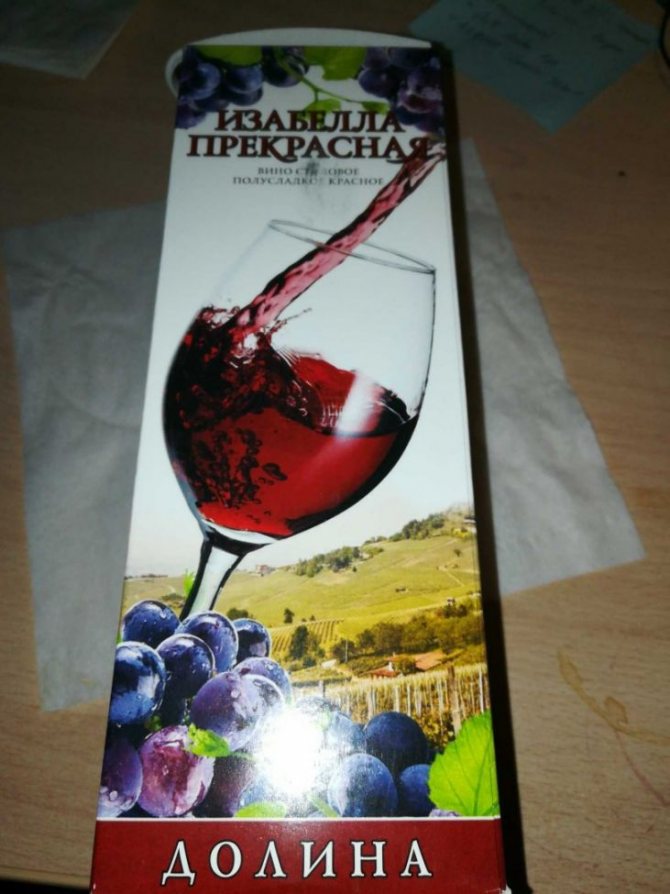

All of these factors will make up the final cost of the finished product.
Pickled grapes
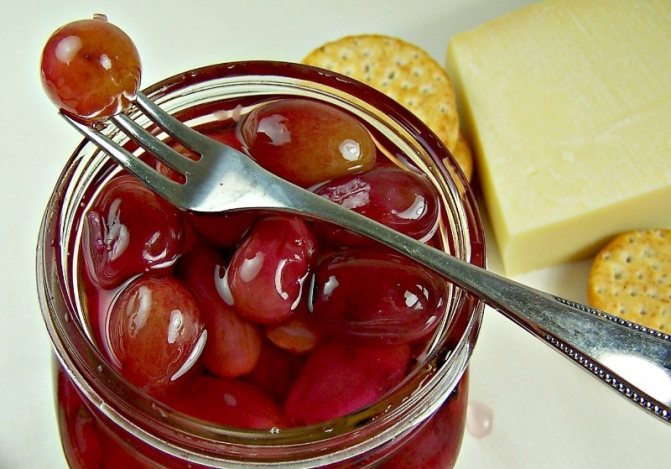

The taste of pickled grapes will appeal to gourmets and all spicy lovers. Such a treat on the table will surely attract the attention of guests and will certainly want to taste it. We offer a recipe for pickled grapes that you will definitely like. Any variety is suitable for him, except for Isabella and Lydia.
List of ingredients for the preparation, calculated for a 0.5 liter jar:
- grapes - 300 grams;
- water - a glass;
- salt - half a teaspoon;
- vinegar 9% - 1 tablespoon;
- peppercorns - 10 pieces;
- garlic - 3-4 cloves.
Your actions:
- Tear off the grapes from the brushes, rinse in water and place in a deep container. Sweeter berries are recommended. If the variety is sour, add more sugar to the marinade.
- Put clean berries in sterilized jars to the very top and pour boiling water over for 5 minutes.
- In a separate saucepan, drain the liquid from the jar of grapes, add a little water, salt and boil.
- Put the peeled garlic in jars, black pepper, vinegar and under the lids.
- Turn the workpiece over, wrap it up and leave to cool.
If you wish, you can add mustard seeds, they will add an exquisite taste to the marinade.
How to make wine from Isabella grapes?
Isabella homemade wine recipes differ depending on the desired strength of the drink.
Red wine
The step-by-step cooking technology is as follows:
- The grapes are kneaded and placed in a warm place for fermentation. The dishes are covered with gauze or cloth from above. The pulp ferments for 10-15 days, during which time it needs to be mixed regularly.
- When the pulp is discolored, it must be squeezed out. All flavor and color from the grape skins will go into the wort.
- The liquid is poured into a bottle, on which a water seal is installed. The container is transferred to a cool room for 3 months.
- Strain the drink through a cotton-gauze pad and bottle it.
The result is a delicious wine that can be tasted in 1.5 years.
Isabella fortified wine recipe
If you like fortified wine, then I have prepared a special recipe for you, according to which you will make delicious Isabella wine at home.


To do this, you will need:
- sugar - 600 g
- medical alcohol - 1l.
- grape berries - 5kg.
You can use the amount of sugar to your liking. From our recipe, it turns out that one liter of the finished drink will take 100 g, so calculate the amount of sugar based on the final volume of the drink. A rate less than the prescription is not recommended.
Preparation:
- First, sort out the berries, then mash and transfer to a glass jar.
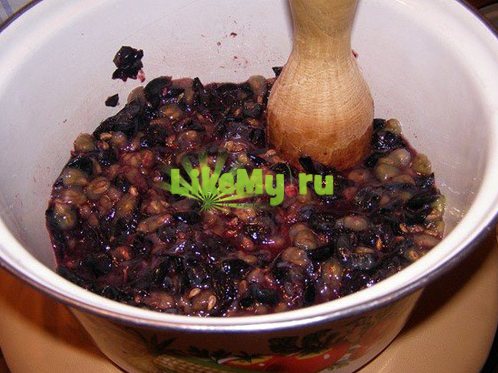

- Wait until the preparation has stood for 3 days, add sugar to the berries.
- Now close the jar tightly and leave it to ferment for a couple of weeks, choose a warm place.
- Take cheesecloth and filter the drink.
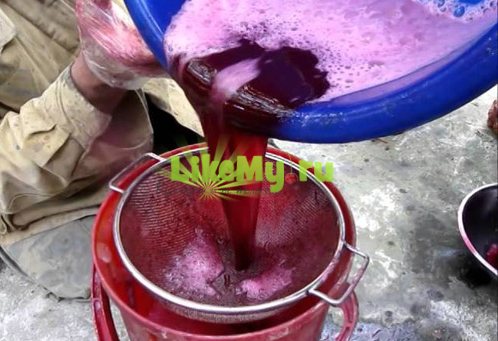

- After cleaning the wine, it should stand up again, but this time put it in a cool, dark place, out of sunlight for 2 months.
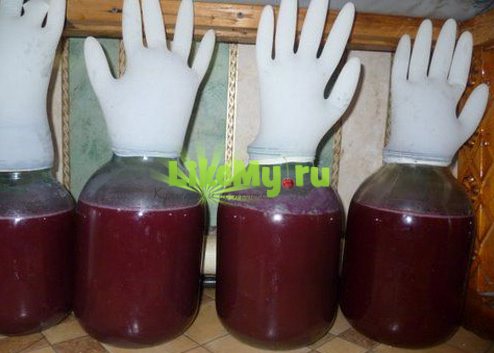

- You can now add alcohol. Let the drink brew for another 10 days.
- The wine is ready! Bottle it for storage.
Drink wine in small doses with meat dishes. Better to drink it cool - it will be better for your digestion.
Opinions of people
There are various reviews about Isabella wine. These can be positive and negative reviews, which are based on the following factors:
- the quality of the finished product;
- individual characteristics of each person;
- with what dishes this wine was served;
- the amount of drink you drink.
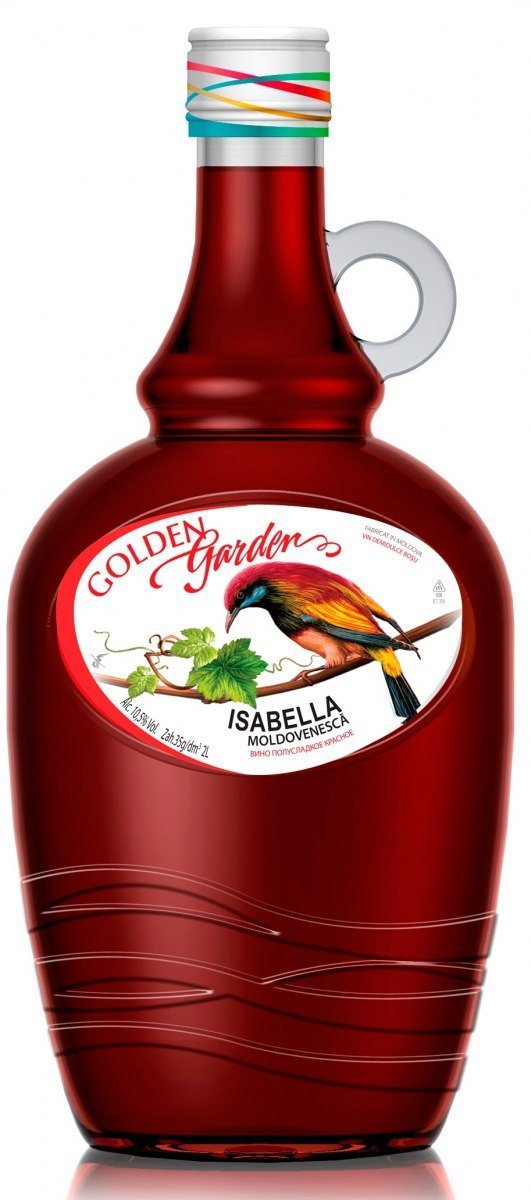

It must be remembered that alcoholic beverages should not be consumed in large quantities. This will negatively affect the state of human health. On the other hand, small amounts of red wine are recommended to improve health.
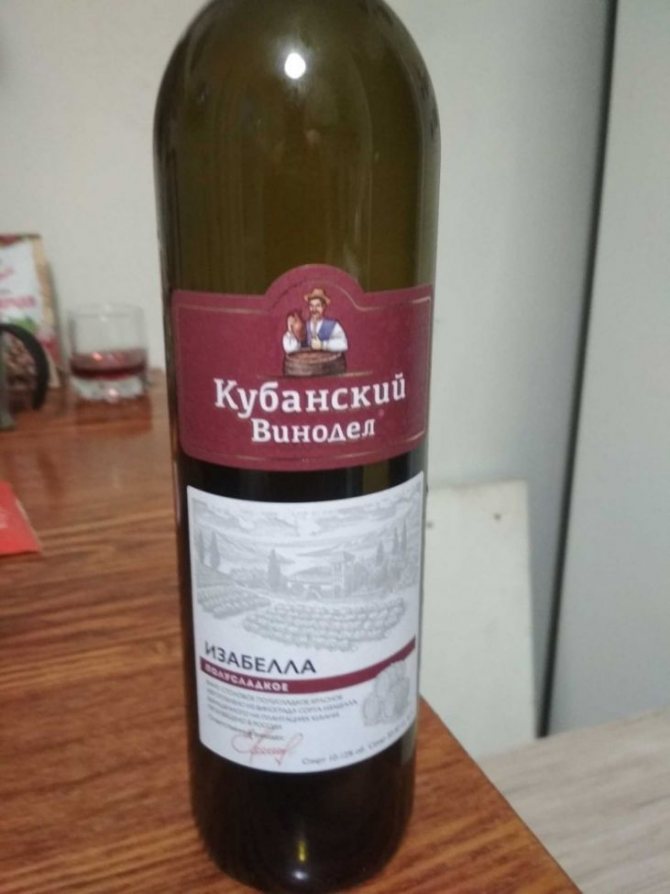

Buy quality wine and drink it in small quantities. It will greatly improve the health of the human body!
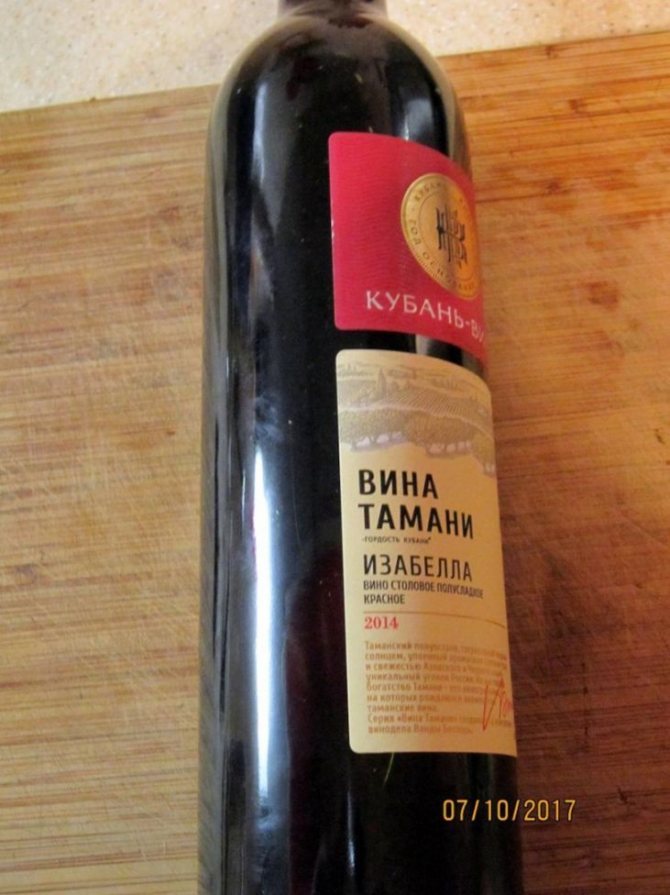

Cake without baking "Grape"
And what to make from grapes? If everything is ready for the winter, the salad has already been made, then you should pay attention to the desserts. Now we will look at a method of making a grape cake without baking. This dessert is called "Grape".
To create a treat you will need:
- 200 grams of chocolate;
- one package (90 grams of jelly);
- grapes (to taste);
- 700 ml sour cream;
- 25 grams of gelatin;
- vanilla sugar;
- 300 grams of crackers;
- 100 grams of raisins;
- a glass of sugar.
Cooking a cake with grapes without baking is described below:
- First, dilute the gelatin as indicated on the package.
- Dissolve the jelly in hot water (300 ml).
- Then whisk vanilla sugar, sour cream and sugar in a bowl.
- When the gelatin is ready, pour it into the bowl of cream. Then whisk again.
- Steam raisins in boiling water. Then drain.
- Grind crackers and chocolate thoroughly.
- Then mix all the ingredients with the sour cream. Next, place in the form.
- Leave the resulting base in the refrigerator for half an hour.
- At this time, wash the grapes, divide it in half.
- After the top has grabbed, lay out the halves of the berries. Then fill the cake with jelly. Leave in the refrigerator until the product is completely cured.
Table with the strength of various wine brands
After familiarizing yourself with the strength of different types of wine products, you should pay attention to individual brands. This will help you better navigate when choosing alcohol to the table.
| View | Name | Fortress in degrees | Grape sort |
| Natural | "Alaverdi" | 13 | Rkatsiteli, mtsvane |
| Domaine Benoit Ente, Bourgogne AOC, Aligote | 12 | Aligote | |
| "Apsny" | 11 | Cabernet sauvignon, saperavi, merlot | |
| Teliani Valley "Akhasheni" | 12,5 | Saperavi | |
| Baron Philippe de Rothschild "Bordeaux Blanc" | 12 | Semillon, sauvignon blanc | |
| Brunello di Montalcino "Poggiocaro" | 14,5 | Sangiovese Grosso | |
| Cantina di Soave | 11,5 | Cortese, Gargonega, Trebbiano | |
| "Alazani Valley Vaziani" | 12 | Saperavi | |
| Barolo, Gian Piero Marrone | 14 | Nebbiolo | |
| Beaujolais "Pasquet Devin" | 12 | Gamay | |
| Fortified | Sandeman Medium Dry Sherry | 15 | Palomino fino, pedro jimenes |
| Cahors "Bolgrad" | 16 | Cabernet sauvignon, saperavi | |
| Rose "Vieux Pinot de Charente" | 17 | Merlot, Cabernet Sauvignon | |
| Enriquez and Enriquez "Malvasia" | 20 | Malvasia | |
| Lheraud Pineau des Charentes Signature | 18 | Uni blanc | |
| Lazzaroni marsala | 17 | Cataratto, grillo | |
| Sparkling | Rose sparkling brut "Mateusz" | 12 | Baga, Tinta Baroque, Rufete, Turiga Francesa |
| Brut "Fanagoria" | 13 | Riesling | |
| Tsimlyansk wines "Tsimlyanskoe gold" | 12 | Aligote, Riesling, Rkatsiteli, Muscat | |
| Franciacorta Brut | 12,5 | Chardonnay, Pinot Nero, Pinot Bianco | |
| "Shavron" | 11 | Ayren |
Important! Some believe that the alcohol content depends on the aging of the alcohol. But this opinion is wrong. Exposure does not in any way affect the number of degrees in a drink. Now that you know what determines the level of alcohol in a drink and how it varies in different types, it will be easier for you to navigate in this environment.
The provided table of wine brands clearly demonstrates the strength range. Be sure to write in the comments what type of alcohol you prefer - light, fortified or sparkling, and also share the names of your favorite brands of alcohol.
Views
Grape berries contain three main types of sugary substances:
- glucose (lowest sweetness);
- fructose (sweetness is 2.2 times higher than that of glucose);
- sucrose (sweetness is 1.45 times higher than that of glucose).
Fully ripe grapes contain the same amount of fructose and glucose (the ratio tends to unity in most varieties). A kilogram of grapes is characterized by 300 grams of glucose. In immature fruits, glucose dominates in the juice, and in overripe fruits, fructose.
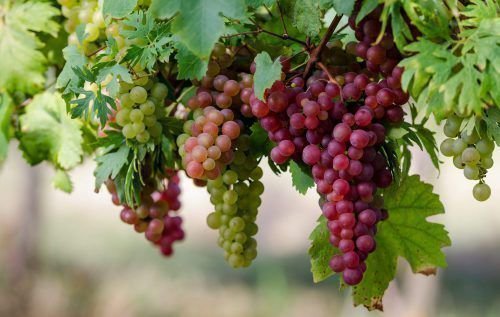

In overripe fruits, fructose dominates in the juice.
These types of sugars are formed during photosynthesis, which occurs in green foliage, and from there are transferred to the bunches and fruits. Sugar is formed in the grape until it is pea-sized and the skin contains chlorophyll. Glucose at the beginning of the ripening period (August) reaches 80 percent of the amount of sugar substances in the juice. As the sugar builds up, fructose levels rise.
Sucrose is found in the green organs of the plant and enters the grapes. Its level depends on the amount of heat and sunlight received by the foliage. It is also present in grape varieties from America. The wort of some varieties contains from 0.04 to 0.4 percent sucrose, while others from 1.23 to 10.7 percent. There is little sucrose in grape fruits compared to the amount of glucose.
Sugar accumulation in grape fruits begins during the ripening period, that is, from the period of fruit coloring in August until the harvesting stage. The growth rate affects the respiration of the berries. Rapid development occurs at the initial stage. When growth stops and breathing weakens, sugar builds up.
With the breakdown of sugary substances in grapes, intermediate substances arise - organic acids. In ripe berries, the content of sugars and organic acids is balanced, physiological maturity sets in. Some of the sugars are used for the synthesis of substances in cellular matter or fats and proteins.
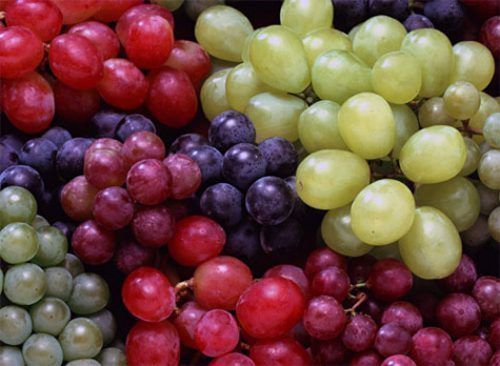

Sugar accumulation in grape fruits begins during the period of fruit coloring.
Common mistakes
Even the most seasoned connoisseurs make minor mistakes. So, if you close the bottle cap poorly or put in an insufficient amount of sugar, the wine can taste sour.
When wine is made from "Isabella", it is harmful for the drink to violate the conditions of its storage, because a musty aroma may appear in the aftertaste.
You need to know that you can compensate for the lack of acid in the wash by adding citric acid to the bottle in an amount of 0.2% of the total volume of the vessel.
If the dry wine is not strong enough, then we can conclude that the fermentation process has not yet been completed. At the initial stages, this can be corrected by adding wine yeast to the wash.
Benefits
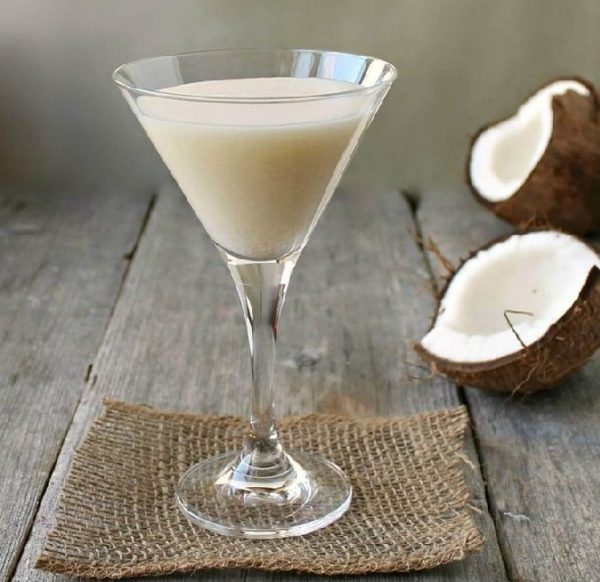

The main reasons why many people prefer home-made wines can be formulated:
- it is a guaranteed natural product;
- their fruits and berries are environmentally friendly;
- the harvest from the summer cottage is so great that there is not even enough imagination for what to do with it: you don't want to sell, and it is unrealistic to overcome so much jam;
- I want to taste wine made from unusual ingredients;
- vitamins and useful elements are better preserved;
- there are no preservatives and various additives;
- homemade wine is cheaper than shop wine.
Used for manufacturing:


- fruits (pears, apples);
- berries (industrial grapes, black and red currants, gooseberries, strawberries, cherries, plums, sea buckthorn, pomegranate);
- fruits and flowers of plants (nuts, coffee, the famous dandelion wine);
- vegetables - there are craftsmen who use tomatoes for this purpose.
The most popular raw material is grapes - the very name of these berries indicates what they are intended for. On the surface of the grapes there is wild yeast that starts the fermentation process and contributes to a natural drink.
Important! In order for the fermentation process to proceed efficiently, the berries are not washed, so they must be collected in places far from roads and factories.
Isabella's harm
As mentioned earlier, processing of the Isabella variety is prohibited in European countries. Why did it fall out of favor? Let's try to figure it out:
- Methanol, the content of which in Isabella exceeds the norm, is one of the reasons for the prohibition of the variety. Methanol is a poison, but in order for it to cause significant harm to the body, it requires at least three hundred grams per day. If you use up to two hundred milliliters, then problems can be avoided. Thus, you can get a minimum of harmful substances and a maximum of useful ones. As you know, the antioxidant content of black grapes is enormous.
- Cream of tartar, which is abundantly formed in the production of homemade wine from Isabella, is considered more a defect that violates the aesthetics of the wine drink than a harmful product. But in this case, the role of producers of expensive wines is especially noticeable, who criticize Isabella as much as they can.
- Glycosides, which cause complaints from doctors, are found in many berries in different quantities. For example, there are many glycosides in currants and nevertheless no one is going to prohibit its use. This substance is found in almost all grape varieties, but most of all in Isabella. The glycoside can become toxic to the human body if excessive wine is consumed. Limit yourself to one glass a day and the problem will be solved.
Maybe, affordable and cheap wine interferes with producers of expensive elite wines. But most of all, they are annoyed by Isabella's high popularity among home producers.
It has long been no secret: beer contains so many preservatives and toxins that it is just right to prohibit consumption. In addition, the alcohol content in any alcoholic product does not benefit a person. That is, consuming more than four hundred grams of any alcoholic product, our body receives a huge amount of poisons, which it must process and remove through a natural filter - our liver.
Isabella grape wine not only tasty, but also beneficial in production. An unpretentious variety with good yield and frost resistance has long been loved by the inhabitants of our country. Homemade alcohol produced from Isabella is undoubtedly tastier, healthier and better than many alcoholic products offered by manufacturers in stores, and it is not very difficult to make it.
By making homemade wine without the use of alcohol, you will protect yourself, your friends and loved ones.
Determination of the level of sugar content
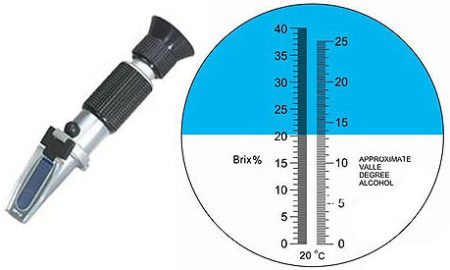

The level of sugar content is determined using additional devices - a hydrometer or a refractometer. For pooled samples, approximately 3 kg will be required. grapes or 1 kg. pulp for chemical analysis by direct volumetric titration. In order for the analyzes to be averaged over the entire vineyard, it is necessary to collect berries from different bushes, adding those that grow below, above, in the middle of the bush. If samples are taken in a vineyard, a field refractometer is chosen. Measurements are carried out three times within 15 days prior to collection, once every 5 days. From the moment of the onset of technical maturity, samples are taken daily. In order to have objective indicators of the average sugar content, at least 10 samples must be carried out at each site.
How to choose the right grapes
To prepare delicious meals, you need to choose quality berries. Consider what you need to consider when choosing.
At the time of buying
Isabella is a late-ripening grape.
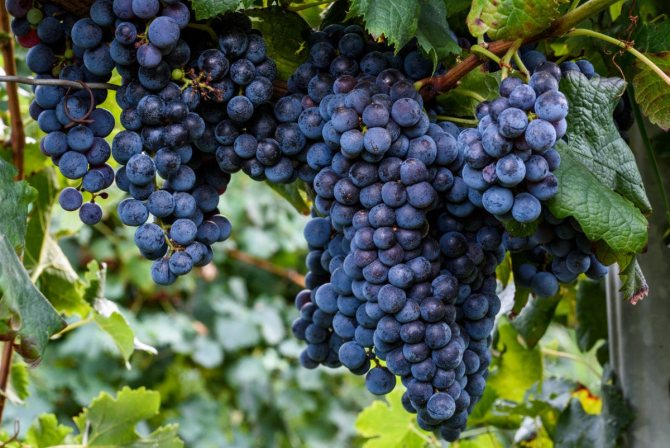

When buying your favorite berries for cooking culinary masterpieces, it is important to pay attention to their appearance and taste:
- clusters of medium size, weight - up to 200 g. The shape is cylindrical, cylindrical-conical, with small "wings" on the sides;
- the structure of the bunch is not very dense, it comes across loose;
- medium-sized berries with a dense skin of dark blue, almost black;
- the pulp of a slimy consistency, a bright aroma of strawberries is present in the aftertaste;
- the grapes are elastic, hold tightly to the bunch - a freshly harvested crop (up to five days). Sluggish, easily separated from the twig, the berries succumbed to freezing, possibly more than once;
- when shaking, the grapes firmly hold on to the bunch, tearing off, resistance is felt - a sign of freshness;
In August, Isabella tastes sour. By offering sweet bunches with the famous name, you are being deceived.
Important! Berries of the late "Isabella" variety have a specific "waxy" coating that protects the grain from diseases.
When self-assembled
The Isabella technical table variety ripens in late September - early October, until early November at warm temperatures. The variety is distinguished by its appearance: the bushes of "Isabella" are vigorous, the leaves are dark green on the outside, white-green on the inside, three-lobed.
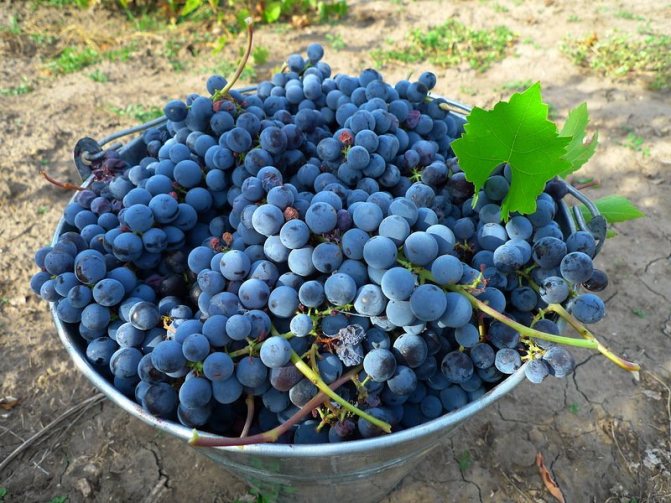

Self-collecting bunches for winter storage, homemade preparations, culinary masterpieces, the choice is made by:
- by degree of maturity: ripe berries meet all the taste characteristics of the "Isabella" variety: strawberry taste and "fox" smell, freely detach from the bunch, spring a little when separating;
- by color and shape: the grapes are regular oval or round in shape, the skin is dense, almost black. Unripe grapes are dark red, brown in color;
- by seed: ripe brown grape seeds, well separated from the pulp
Important! There is no need to pick grapes in the early morning or in rainy weather; when storing, the brushes can become moldy.
What does the sugar content depend on?
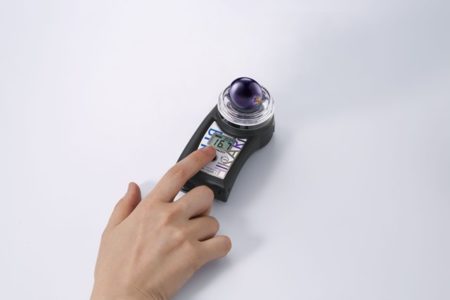

This indicator depends on the variety and its characteristics. It is also important to consider a few more factors that together affect the taste and sugar content:
- type of soil (acidity, moisture, density, mineral composition);
- geographical location (climate, rainfall, altitude);
- insolation level (indicator of solar radiation);
- the proximity of water bodies;
- the level of agricultural technology.
Growing region
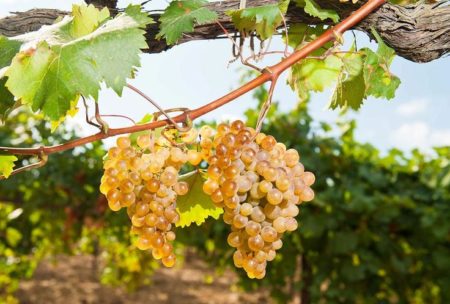

The higher the average annual temperature and the number of sunny days in the growing area, the higher the level of sugar accumulation in the fruit. The Asian, Central Asian and coastal regions are excellent climates, because the weather here is warm, which contributes to better ripening and a higher sugar content in grapes. On average, the varieties grown here have about 30-32%. It is also worth noting that the mountainous area has a beneficial effect on the taste and sweetness. Mountains protect from strong winds, heavy rainfall, which also contributes to the preservation of the high taste of the crop.
Soil composition
Grapes can grow on any soil, but the taste, sugar content, brush sizes will vary greatly even within the same variety. Therefore, it is worth considering some features that will help grow a sweeter crop. It is better not to plant wine varieties on black soil, because of the high nitrogen content in the soil, the stems will be powerful, and the formation of the vine will be weak. Mixed soils are best suited - sandy, sandy loam, loamy, clayey with silt, stones, organic matter. The main thing is that the earth conducts water well, and it does not stagnate.
Water supply
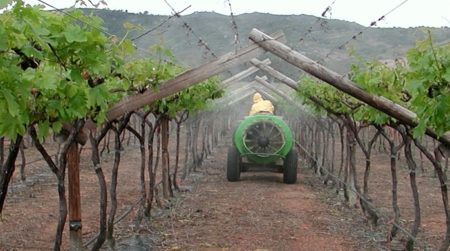

To grow a good crop with a pronounced sugar content, it is necessary to take into account the peculiarities of this crop when watering. Optimal conditions are periodic watering at the time of growth of stems and leaves, the absence of bunches during ripening before harvesting. It is important to maintain a balance so that the plants get enough moisture without being exposed to drought or stagnation of water in the soil.With excess moisture, the berries grow watery, without a pronounced bouquet of taste, with a lack of berries, they become sweet, but at the same time remain small. If the groundwater level does not lie deeper than 6 m, and the annual precipitation rate is not less than 400 mm, then the vineyards can do without additional irrigation. In drier climates or too deep underground sources, an additional irrigation system will have to be erected. On average, the soil moisture level should remain at around 70-75%, then the sweetness indicators will delight.
Berry jam
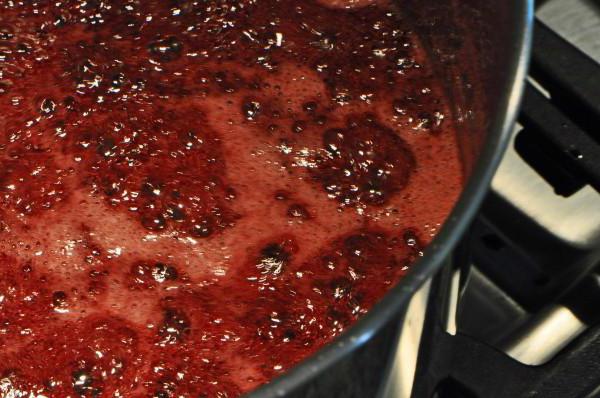

What to cook from grapes with seeds? Delicious jam. Now we will tell you how to make grape. You do not need to remove the pits for cooking. By the way, they are very useful. Therefore, you should not throw away the seeds using jams.
For cooking you will need:
- three glasses of water;
- a kilogram of grapes;
- half a teaspoon of citric acid;
- 5 glasses of sugar;
- cherry leaves (five pieces).
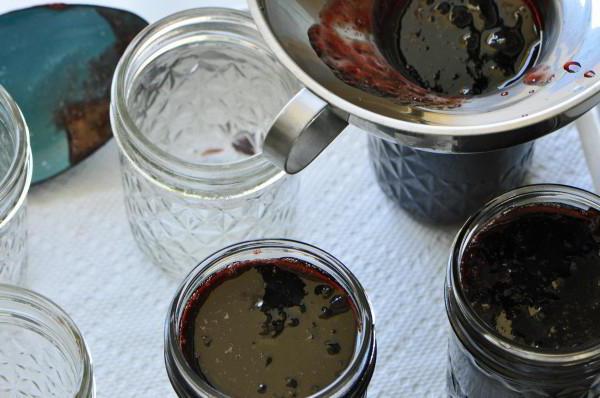

Making grape jam is described below:
- First, select ripe bunches, remove broken and rotten berries.
- Place strong grapes in a saucepan. Then rinse thoroughly under water.
- Now take another saucepan (deep), pour water into it, add sugar.
- Next, put the mixture on low heat, bring to a boil, stir constantly. When the sugar dissolves, the syrup is ready.
- Then put the berries there. Then bring the mixture to a boil. Then remove from heat. Leave the grapes to infuse for six hours.
- Next, add the cherry leaves to the pot. Then return the container to the stove, bring to a boil. Now cook for three minutes. Repeat this procedure two more times, with breaks between each three-minute boil at ten hours. Add citric acid when you put it on the fire for the last time. Then remove the cherry leaves. Then spread the hot jam in sterilized jars. Then close them with the lids.
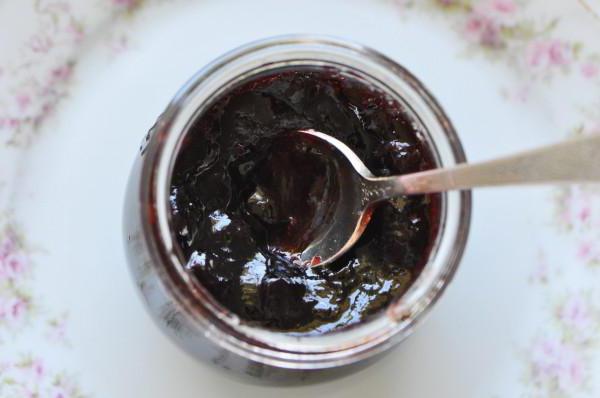

Now you know what you can make from grapes for the winter. This flavorful sunny jam is best stored in a cool place.
Preparatory stage
Before you start making wine, you need to collect the berries and prepare the container. The final result largely depends on the correct preparation.
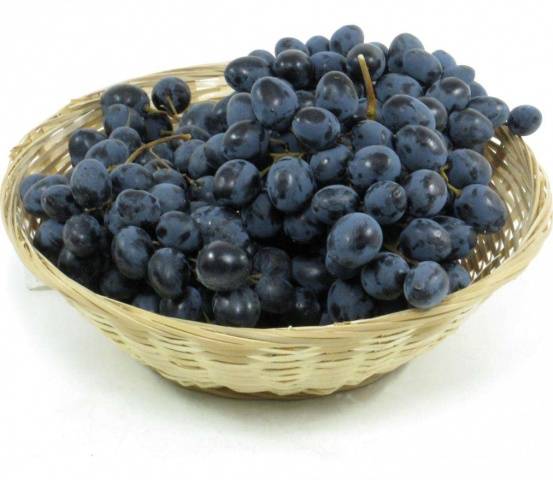

Vintage
Isabella wine is made from ripe berries. If the grapes are not sufficiently ripe, they retain a large amount of acid. Overripe fruits contribute to vinegar fermentation, which leads to spoilage of the grape juice. Fallen berries are also not used for making wine, as they add a wine flavor to the drink.
Advice! The grapes are harvested in sunny weather without rain. It is advisable that dry weather stand for 3-4 days before starting work.
Harvested grapes must not be washed in order to preserve fermentation-promoting microorganisms. If the berries are dirty, then gently wipe them with a cloth. After harvesting, the grapes are sorted out, leaves, twigs and low-quality berries are removed. It is recommended to use the fruits within 2 days.
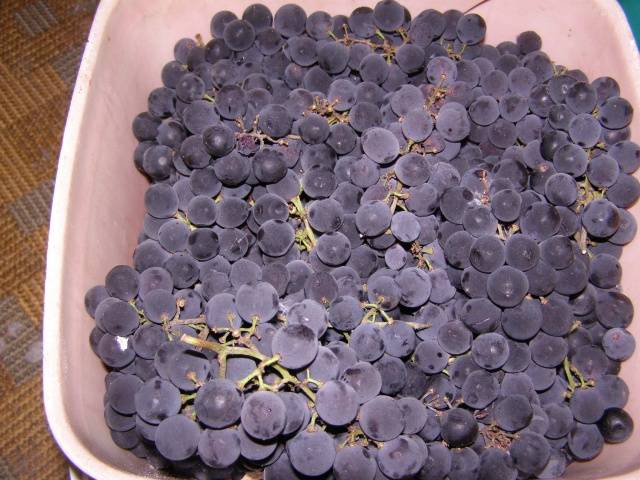

Container preparation
For homemade grape wine, glass or wooden containers are chosen. It is allowed to use containers made of food-grade plastic or enameled dishes.
Wine, regardless of the stage of preparation, should not interact with metal surfaces, with the exception of stainless items. Otherwise, the oxidative process will begin, and the taste of the wine will deteriorate. It is recommended to knead the fruits by hand or using a wooden stick.
The container must be sterilized before use to eliminate harmful bacteria. The easiest way is to wash them with hot water and wipe them dry. On an industrial scale, containers are fumigated with sulfur.
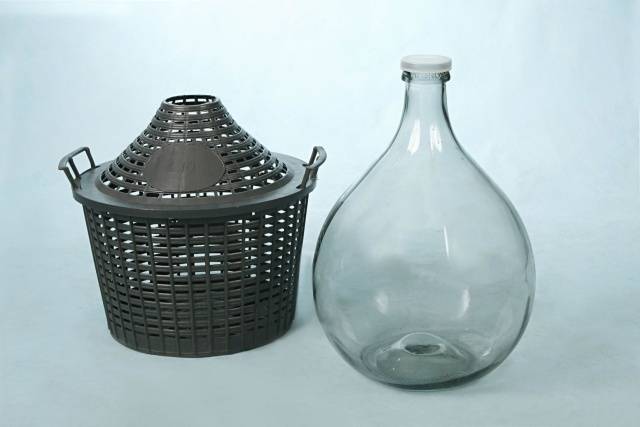

Features of making wine from Isabella
Making Isabella wine is easy. This grape variety is not used in the wine industry.Studies have found that in the pulp of fruits, methyl alcohol and hydrocyanic acid are present in increased concentration. However, these compounds are not capable of causing harm to the human body if consumed in moderation.
Therefore, the Isabella grape is today used only in home winemaking. Summer residents and winegrowers love this variety for its unpretentious cultivation, abundant seasonal harvests, high-quality fruiting even in non-native climatic conditions.
To make a drink with your own hands, you need to prepare dishes and a water seal.
The dishes are enameled or wooden, but not metal, since metal spoils the taste of the drink.
If there is no ready-made water seal, then instead of it, you can use a sterile medical glove, piercing each finger in it with a needle. The function of the water seal is to release carbon dioxide from the dishes. Prepared containers are poured over with boiling water.
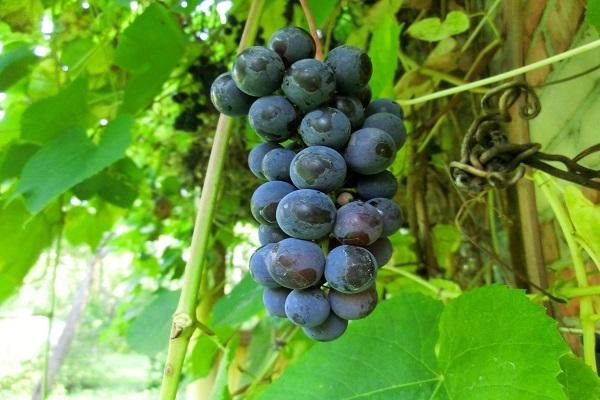

Before starting work, it is advisable to wear rubber gloves, since there is a lot of coloring pigment in the skin of Isabella grapes, and fingers will be stained.
Useful qualities
Berries contain a substantial amount of many useful substances, such as sugar, organic acids, pectins, minerals, dyes and flavorings. It is not the fruits themselves that are more rich in vitamins, but the leaves. In addition, the whole plant includes phytoncides.
Drying varieties are used to make raisins. The leaves are used to prepare the second course, the so-called eastern dolma.
They are also used in folk medicine. It has long been famous for its useful properties in the treatment of pulmonary pathologies, bronchitis, gastrointestinal tract pathologies, asthma, kidney and liver diseases. It is believed that grapes are beneficial for nervous disorders.
How to store and use correctly
The late Isabella variety is well suited for winter storage.
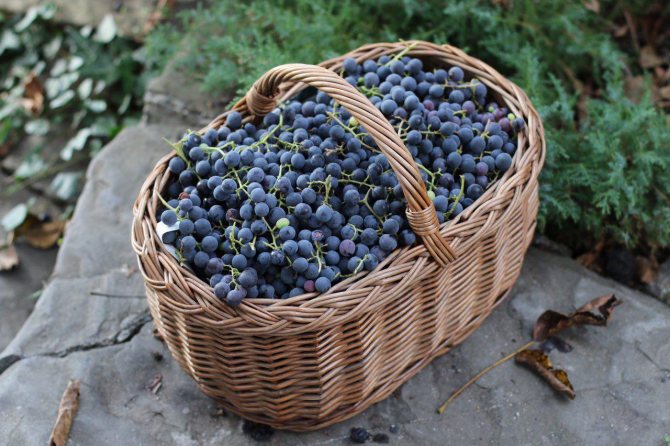

The storage rules are as follows:
- Clusters of medium density are chosen, which were on the vine until fully ripe, ripened in dry weather.
- The grapes are laid for storage a maximum of three days after harvest.
- Be sure to pre-inspect the selected bunches, carefully remove the damaged, dry berries.
- Store the brushes suspended in a dry room at a stable temperature from -1 ° C to + 8 ° C, without lighting. It must be stored in a separate room, never near potatoes, beets and other vegetables.
- Nearby, you can put a container with quicklime to absorb excess moisture.
Having saved your favorite fruit in this way, you can enjoy its taste for almost all winter months, before using it, be sure to look well, remove spoiled grapes, rinse well and dry in a colander or paper towel.
A wide assortment of drinks, dishes, desserts from "Isabella" delight gourmets and lovers of traditional and exotic cuisine all year round, bringing at the same time pleasure from taste, pleasure from aroma, benefits from beneficial substances in grapes.

